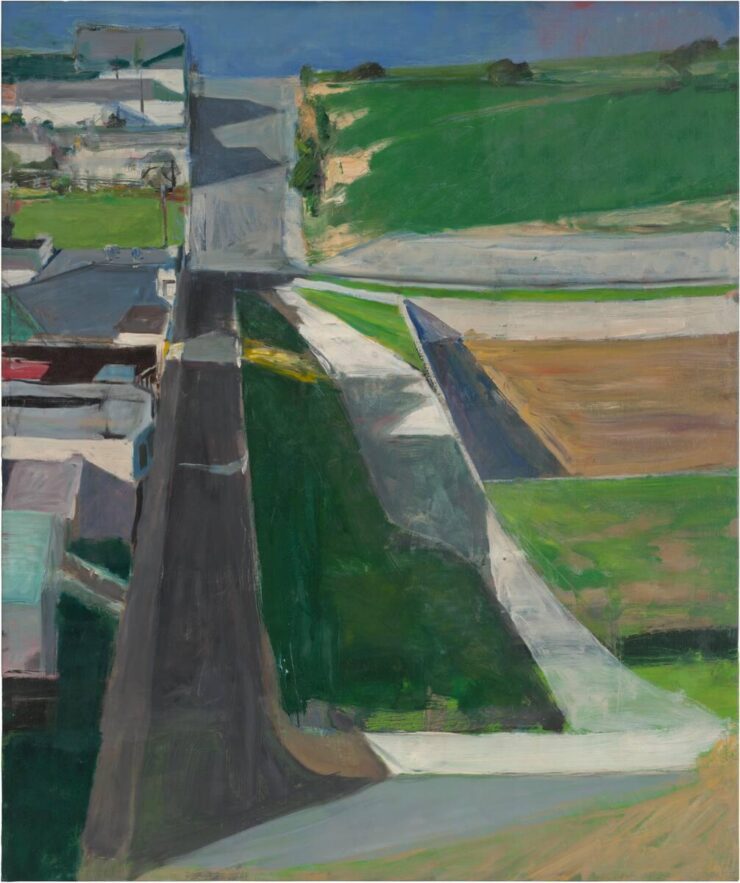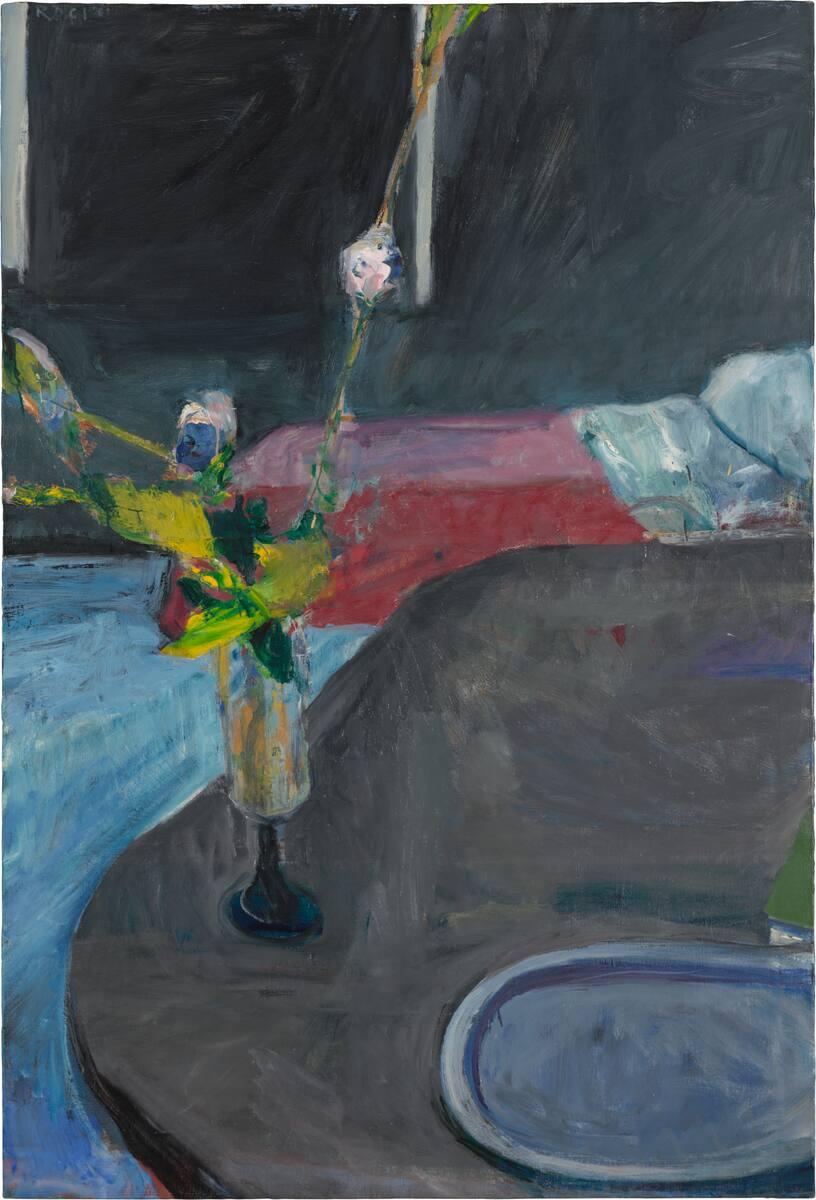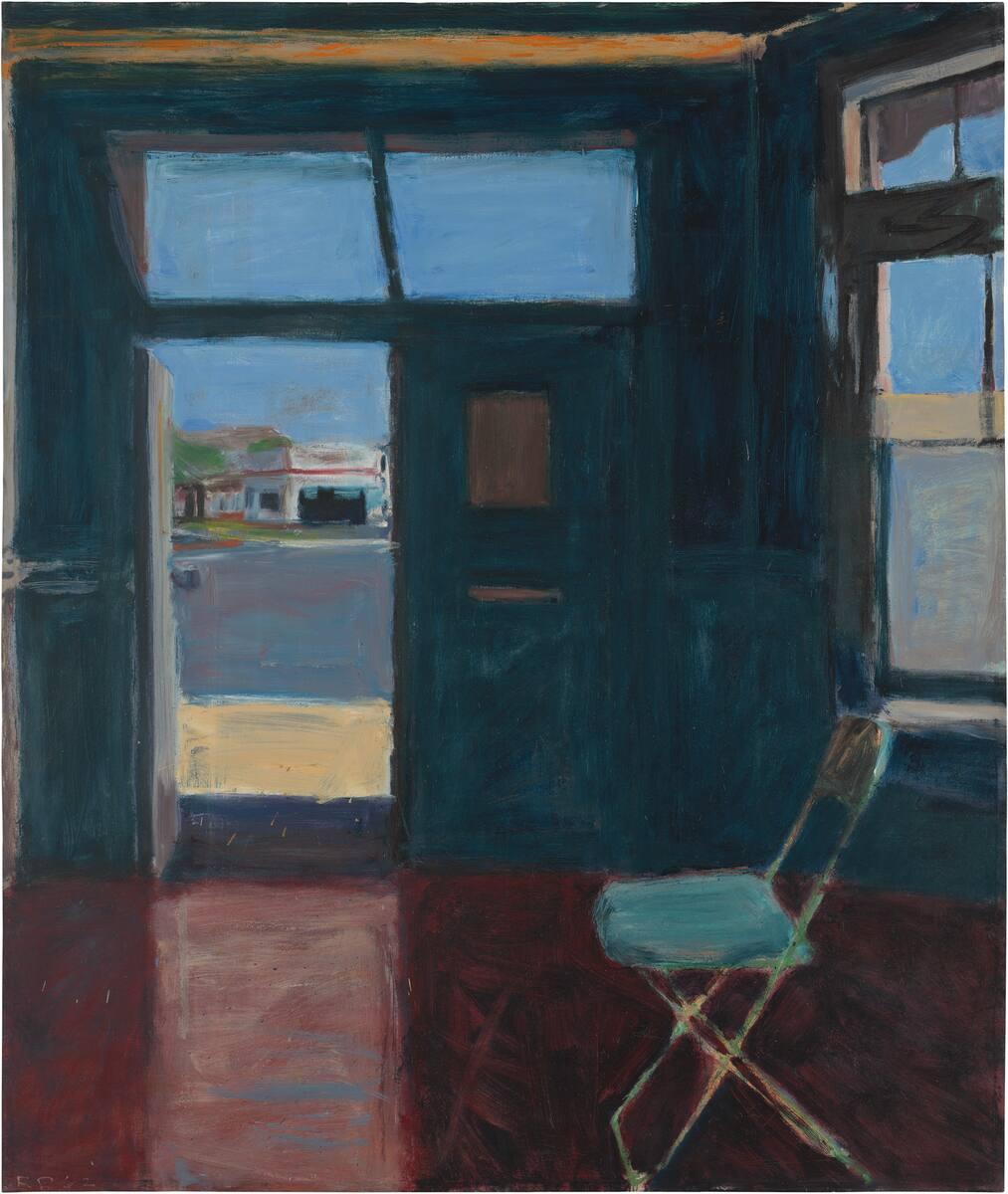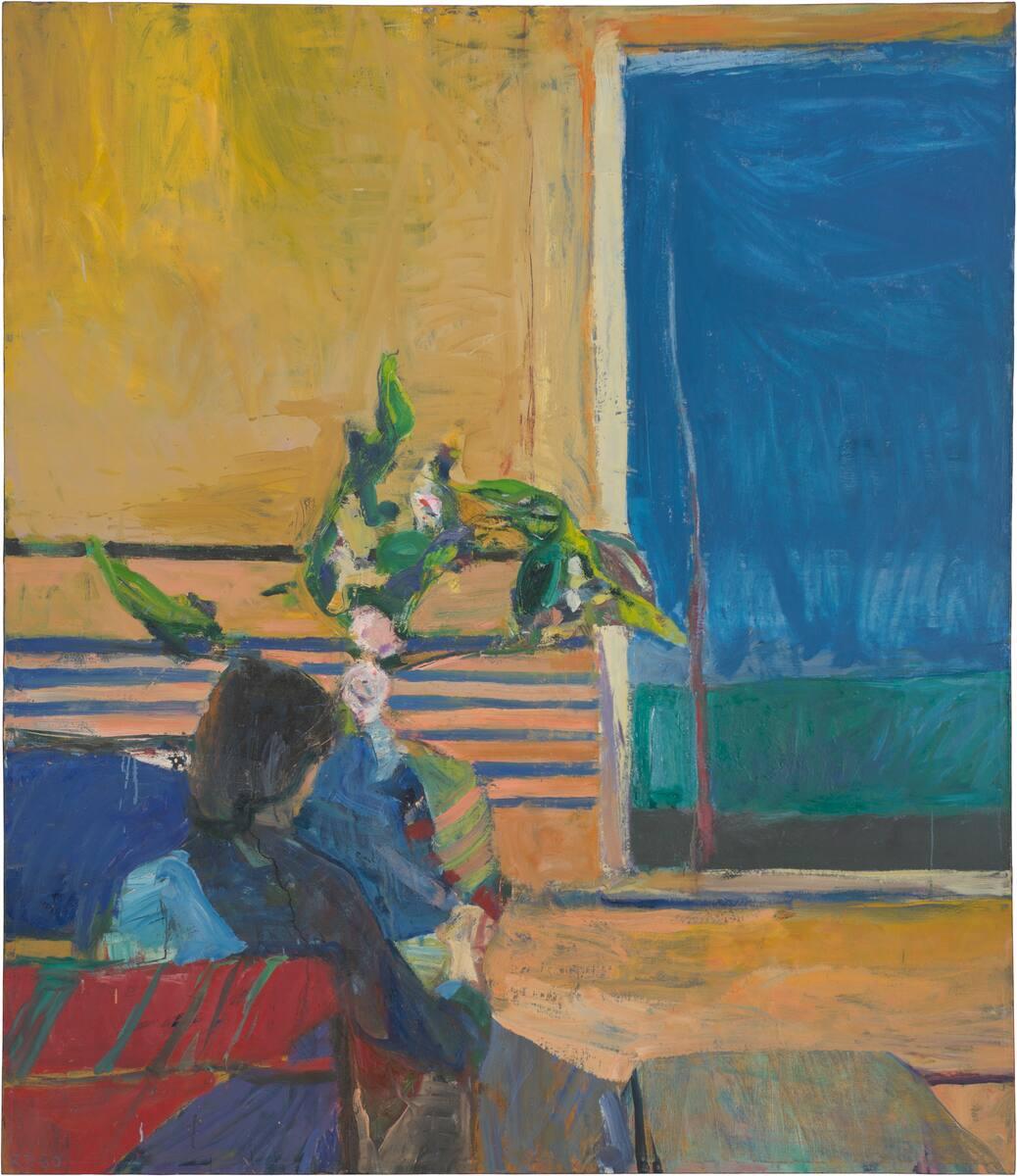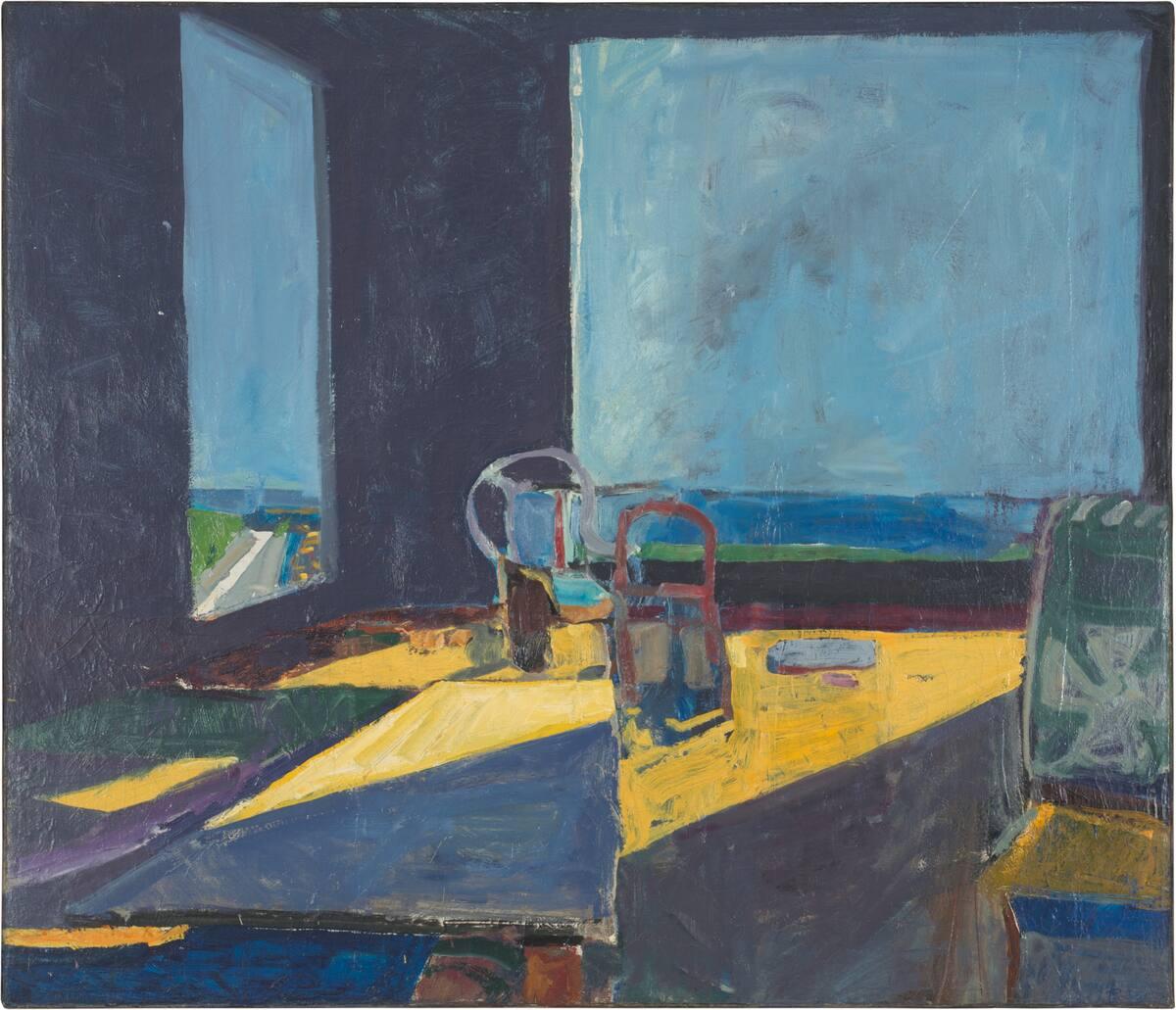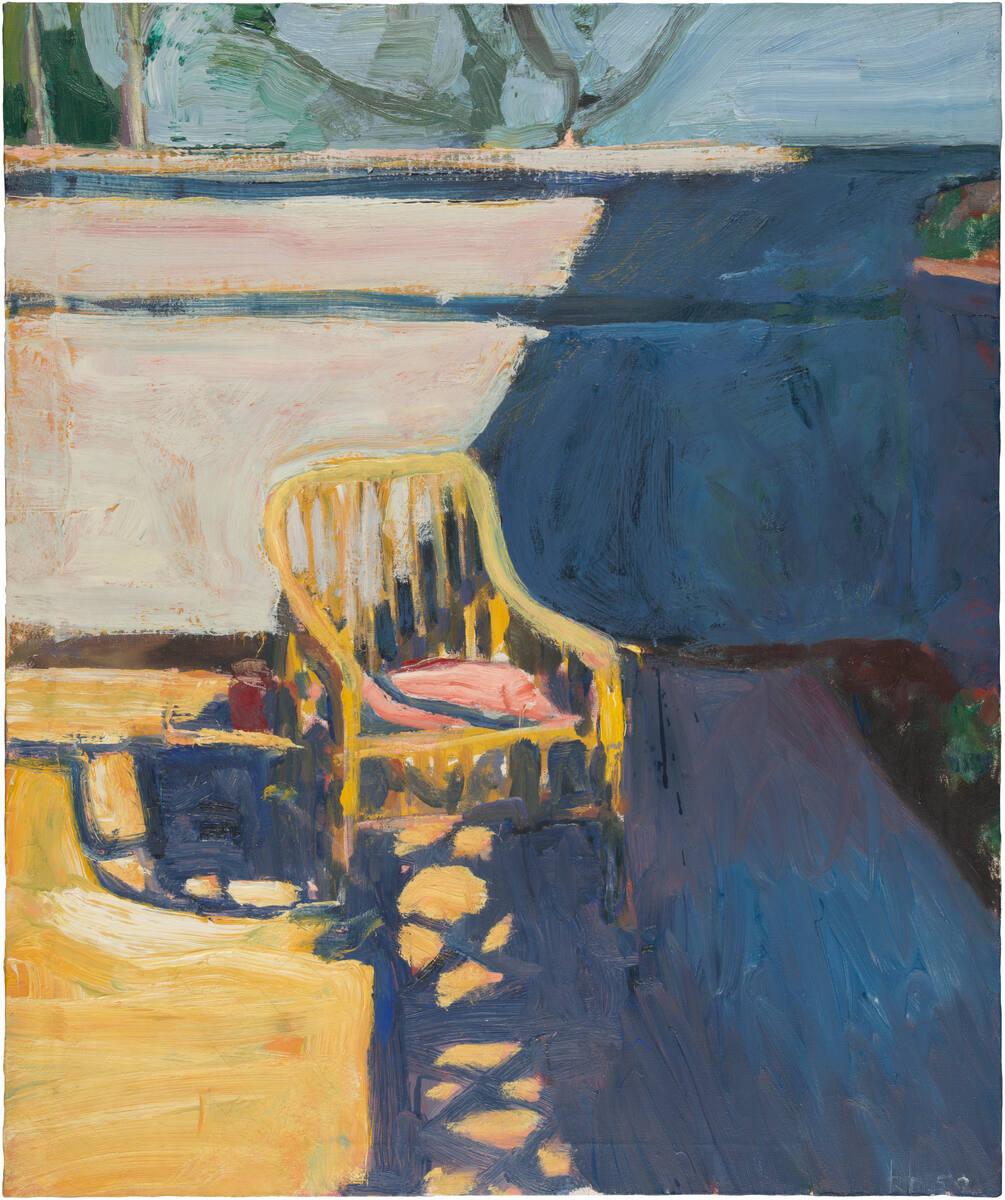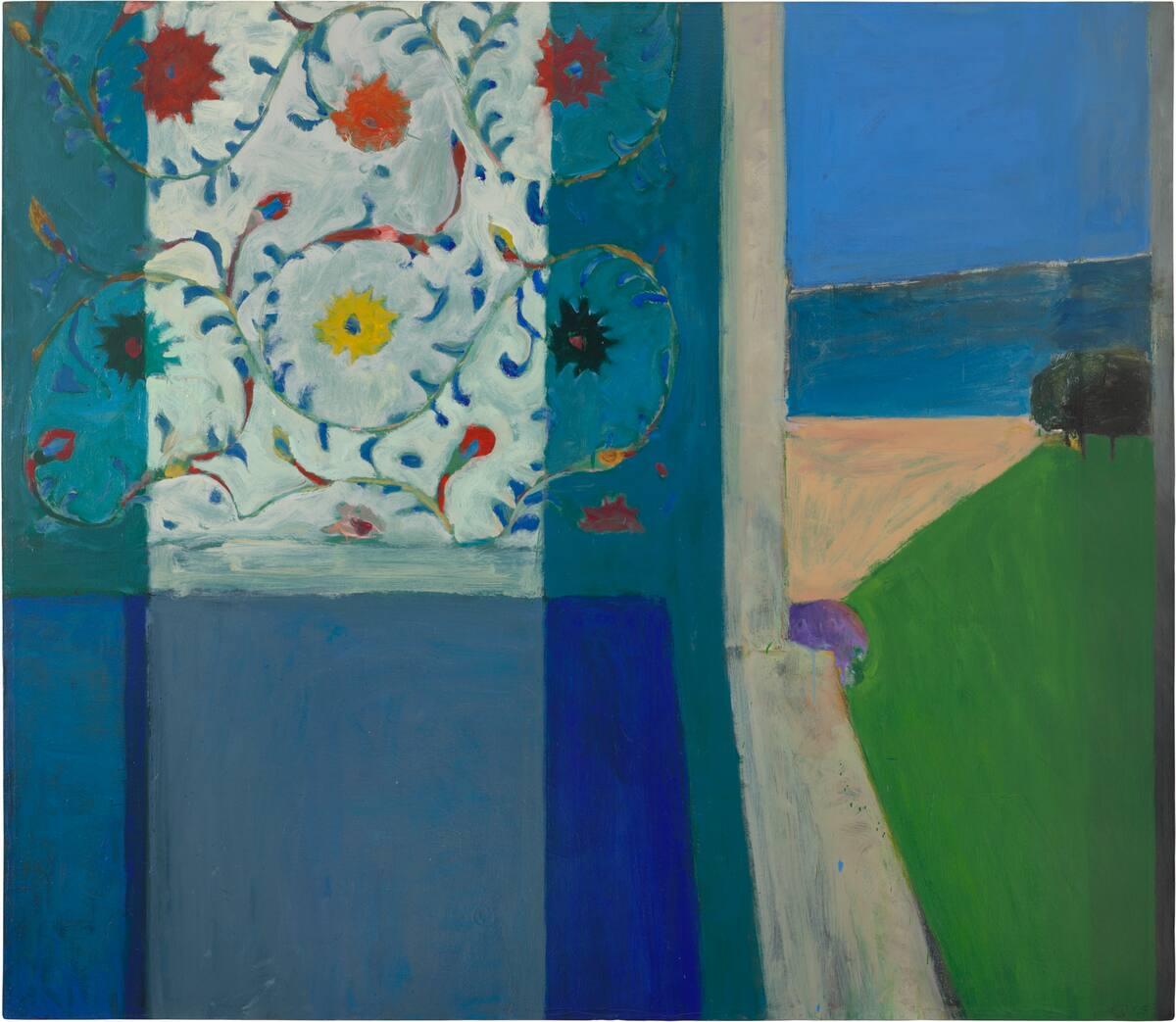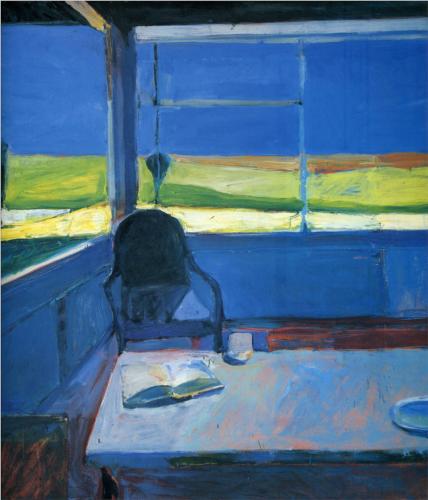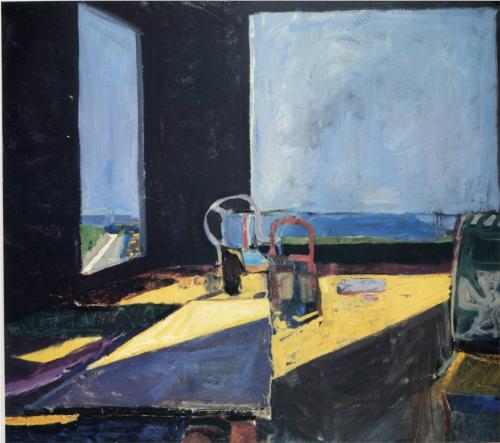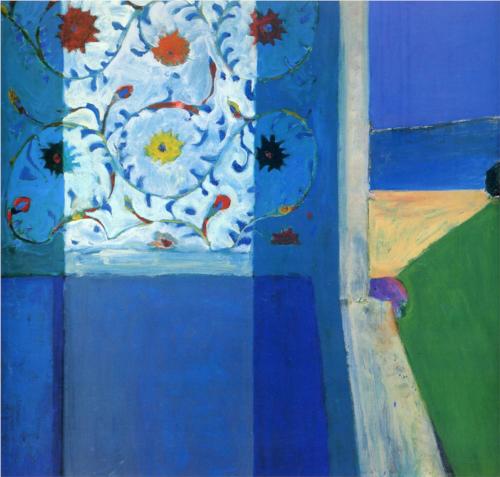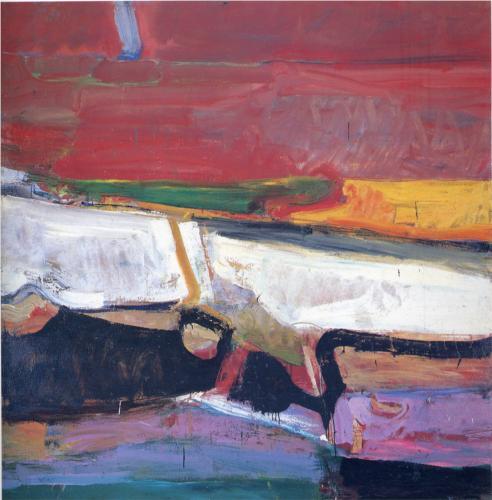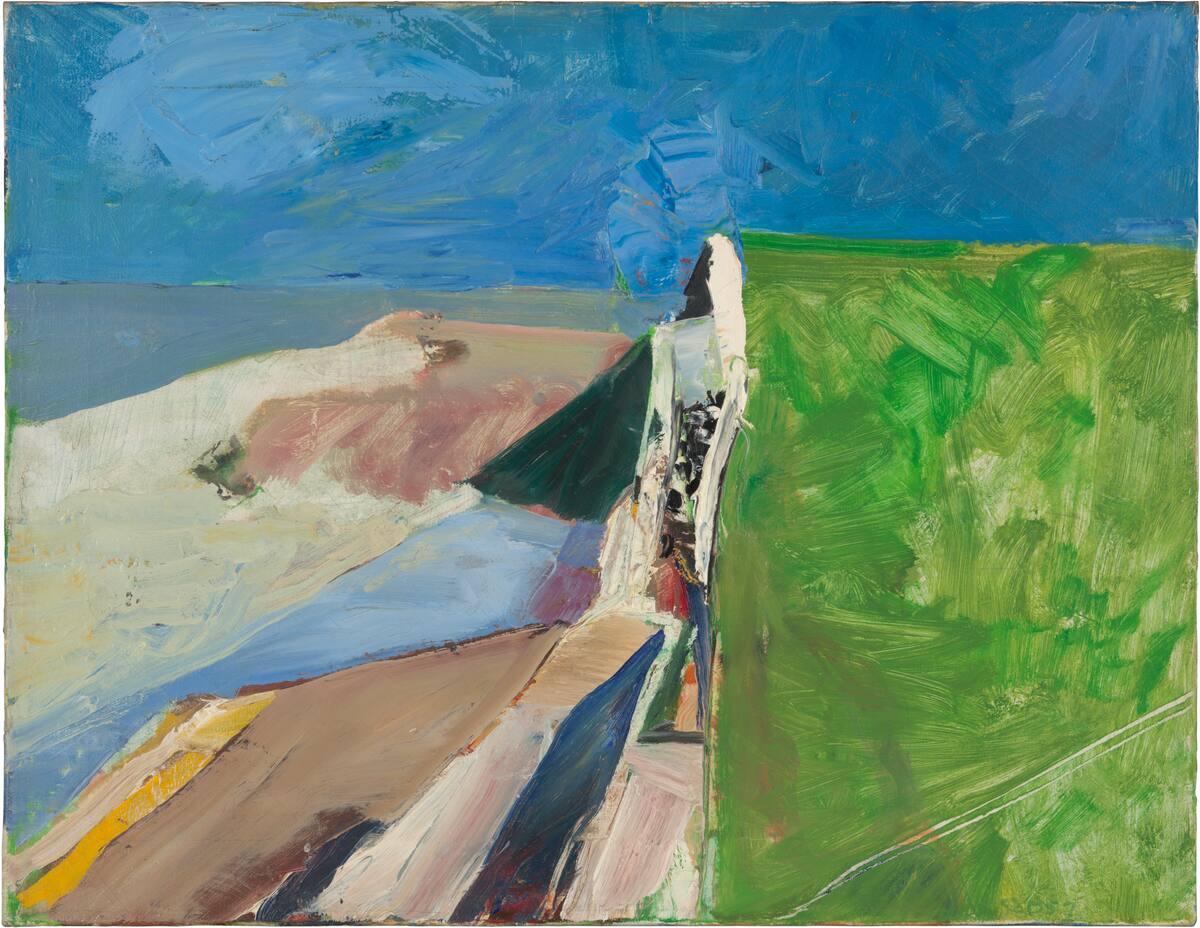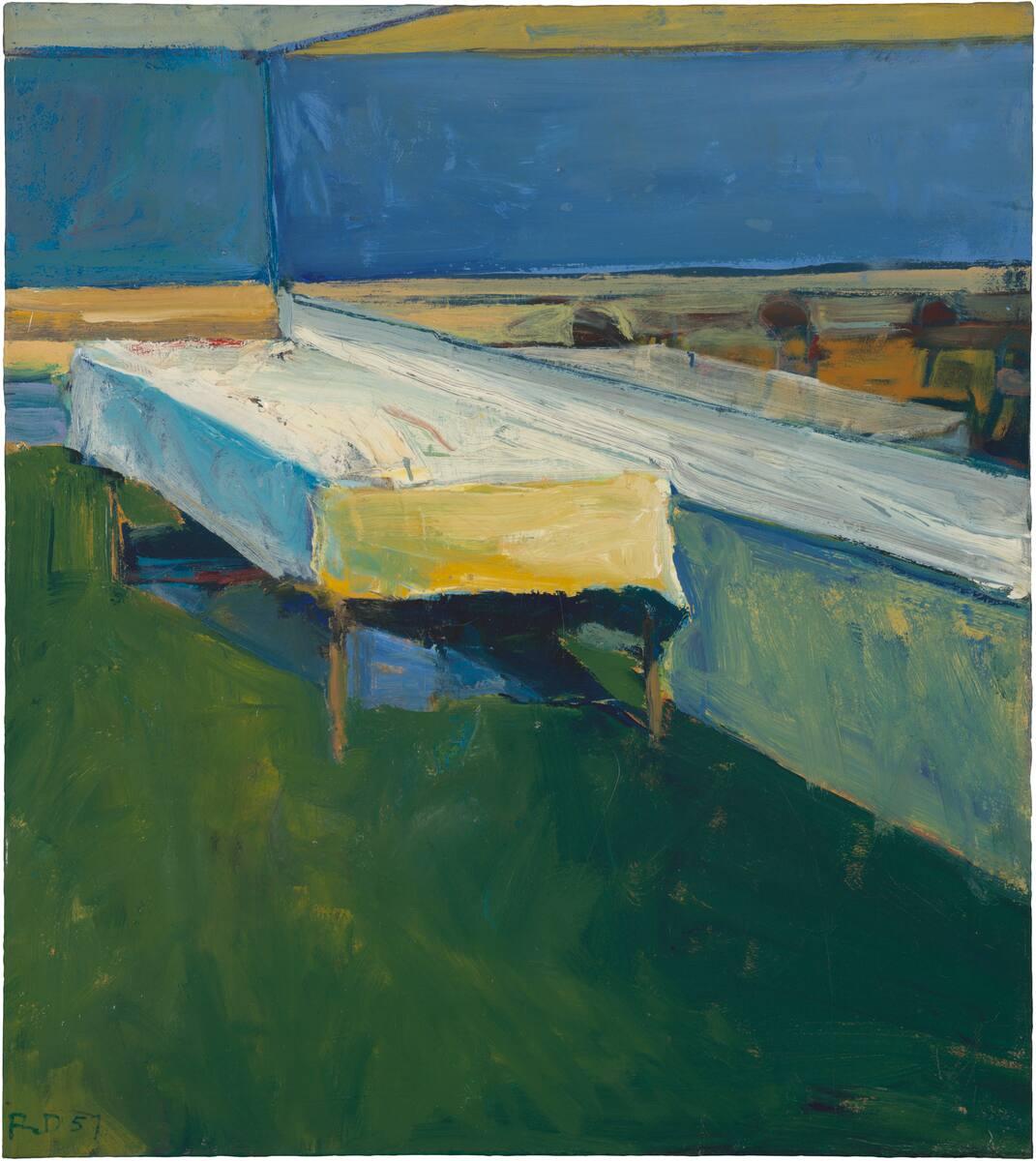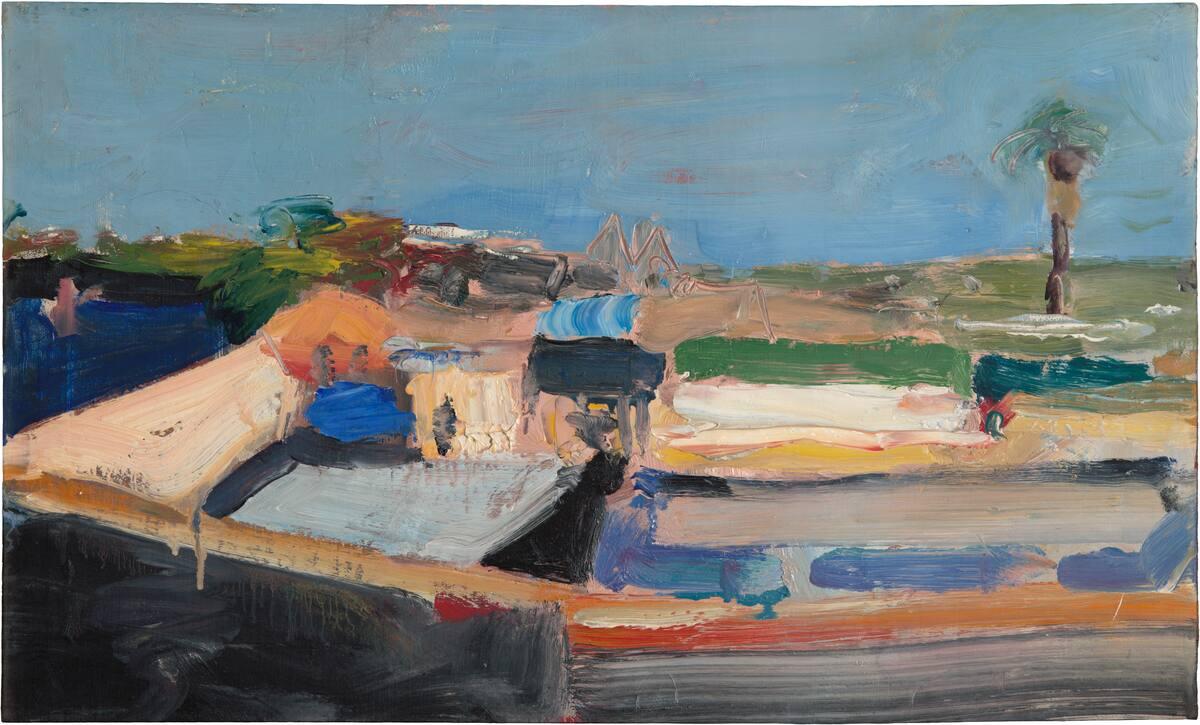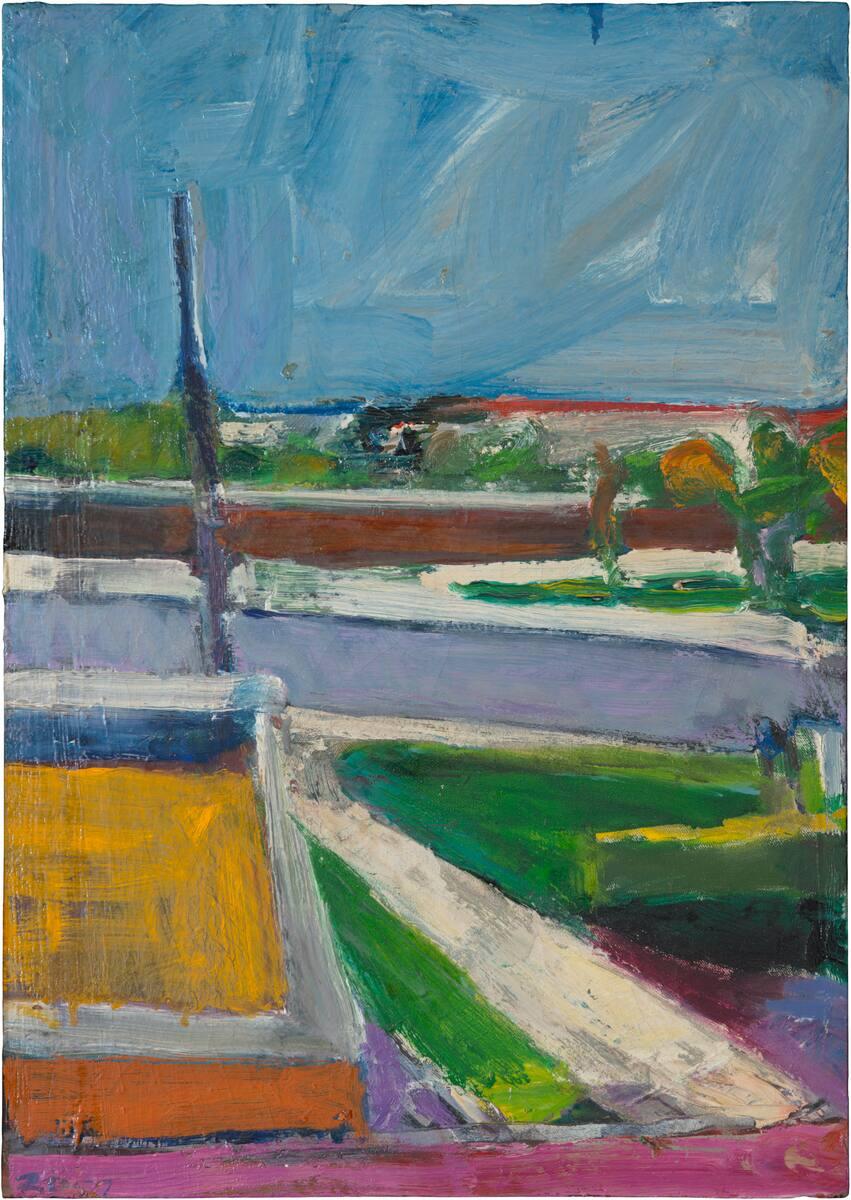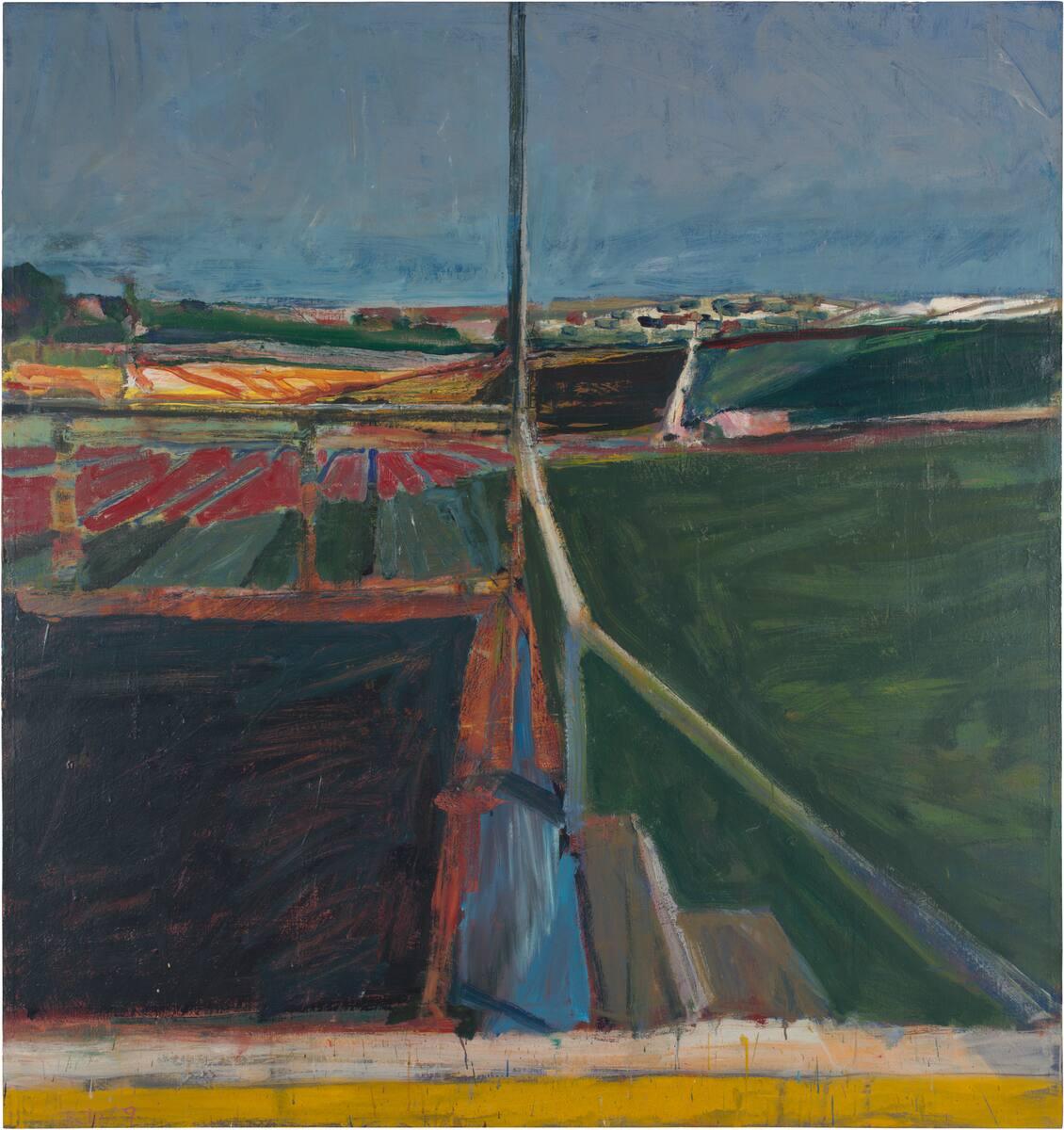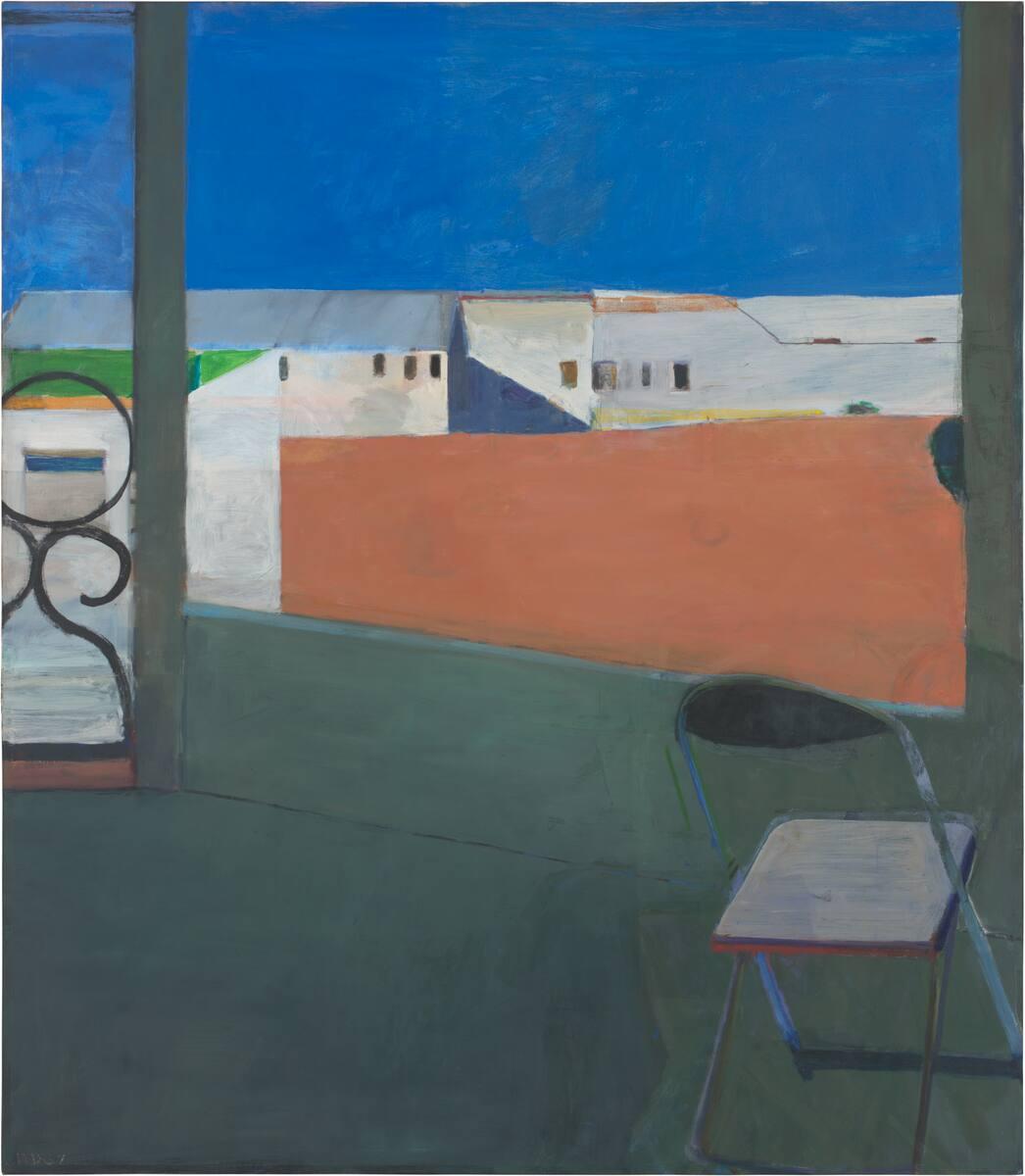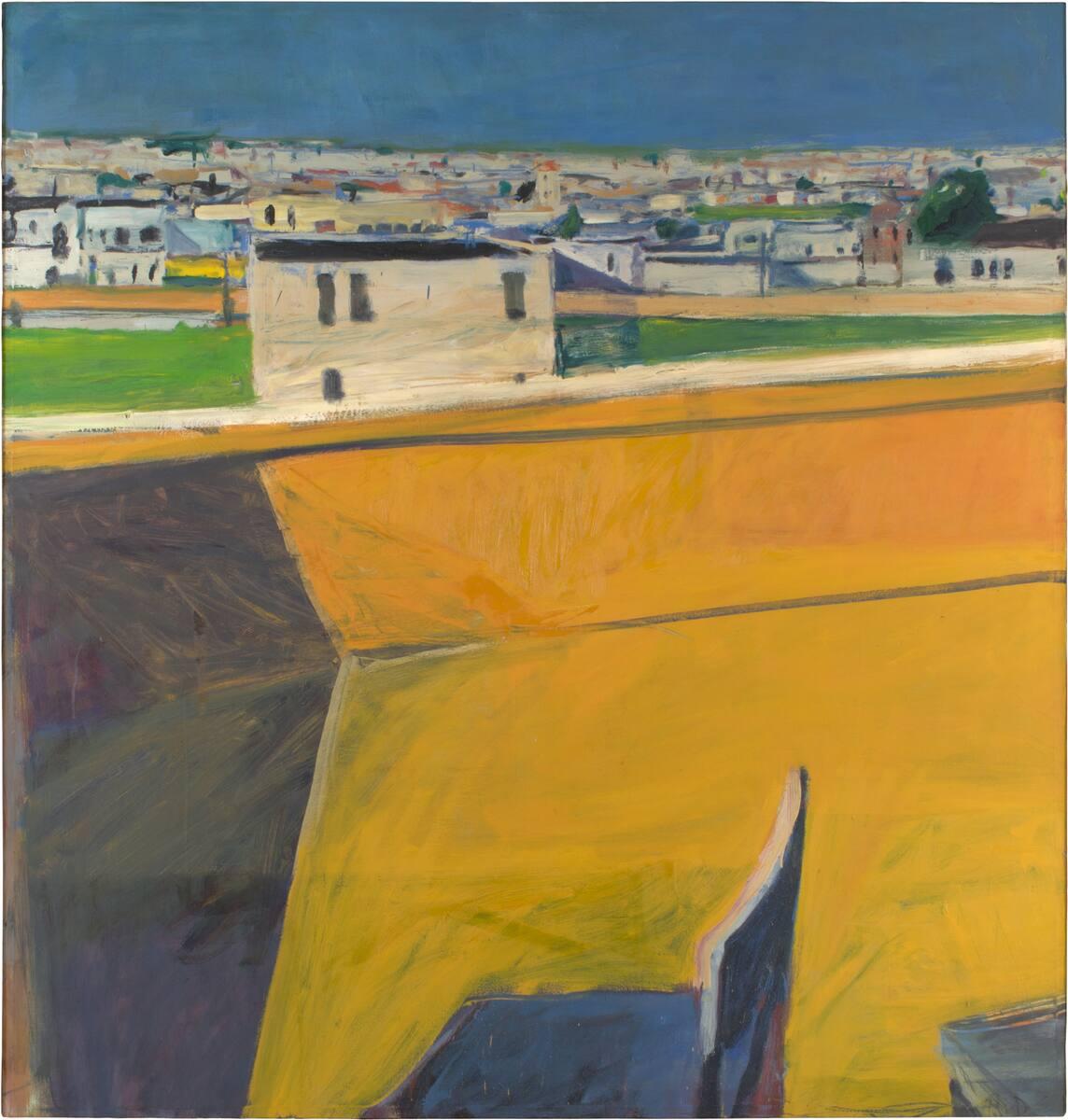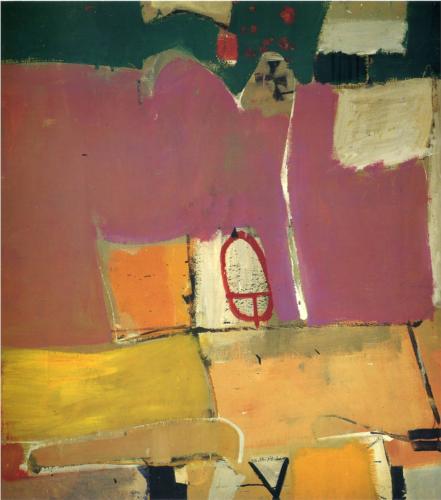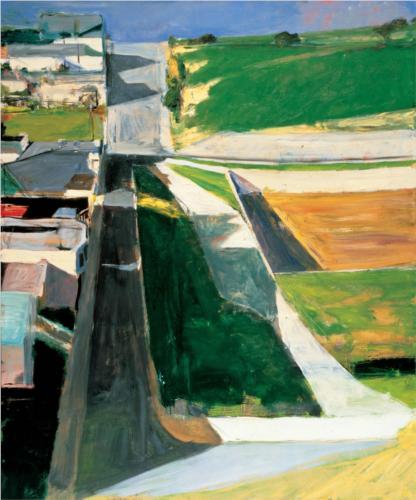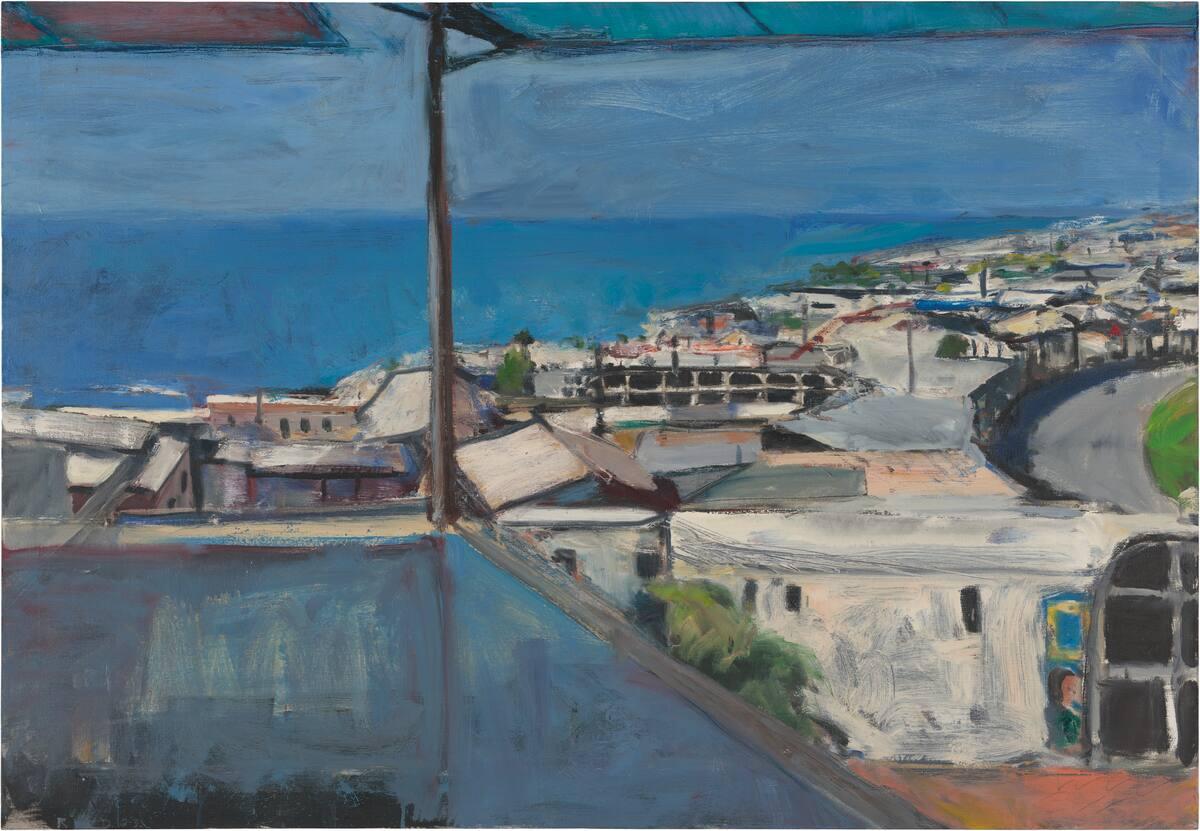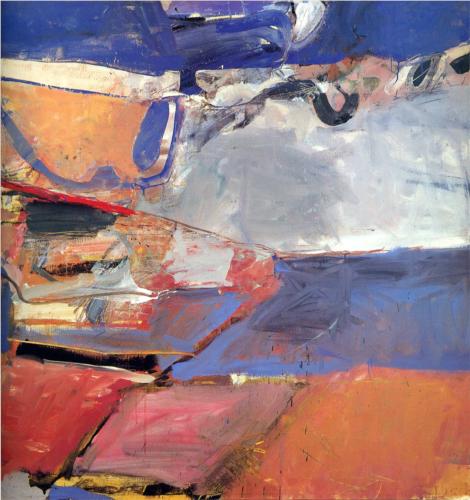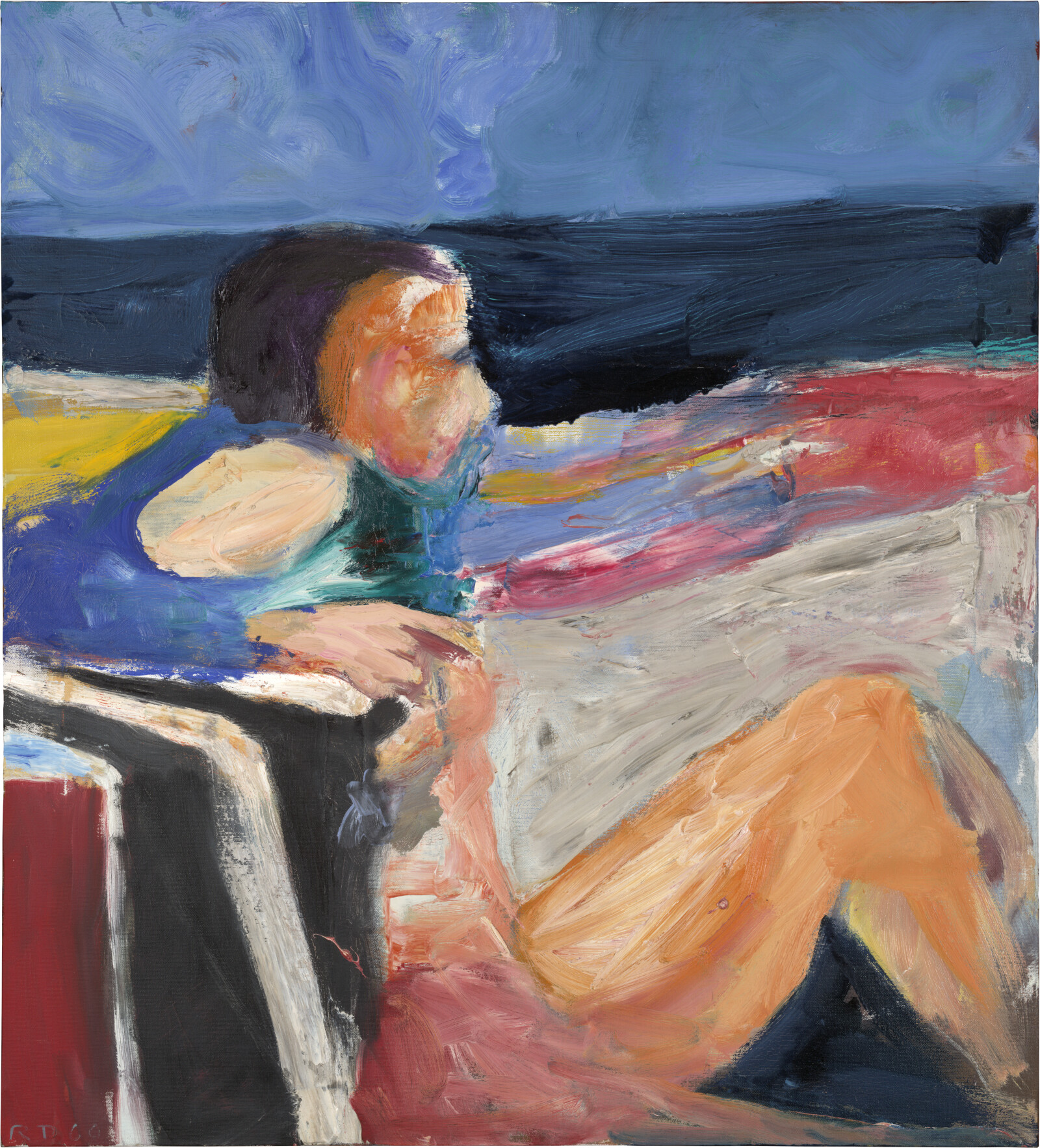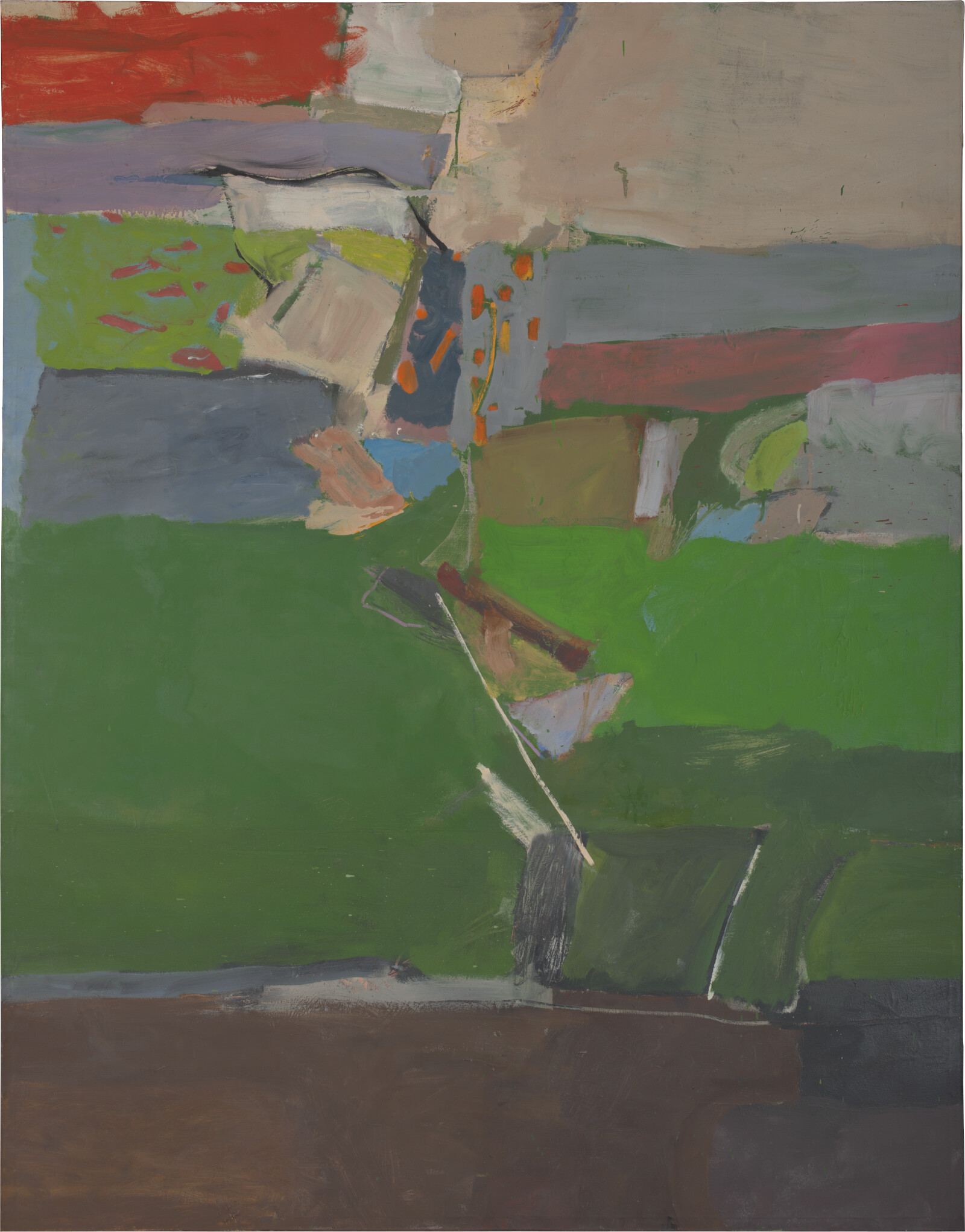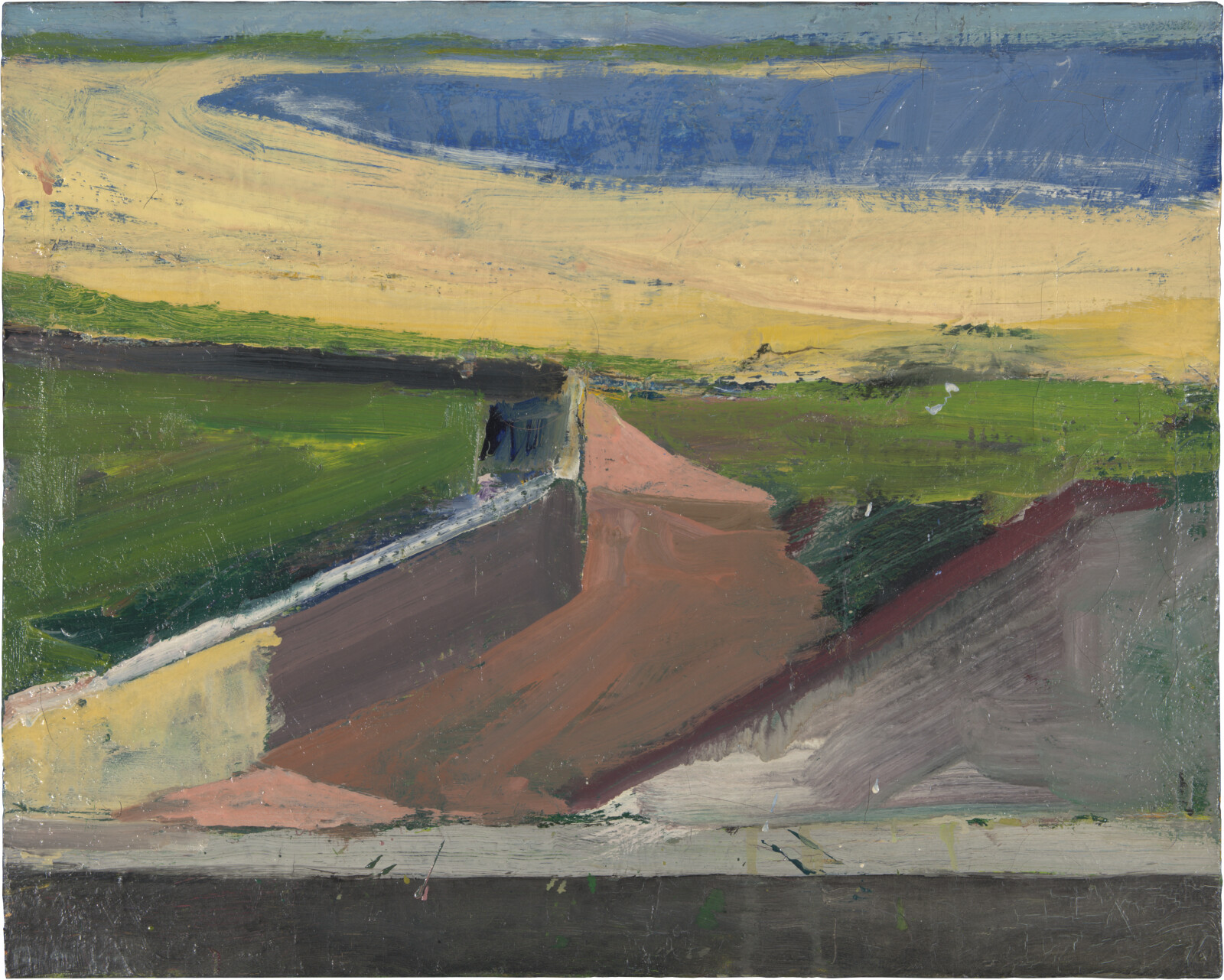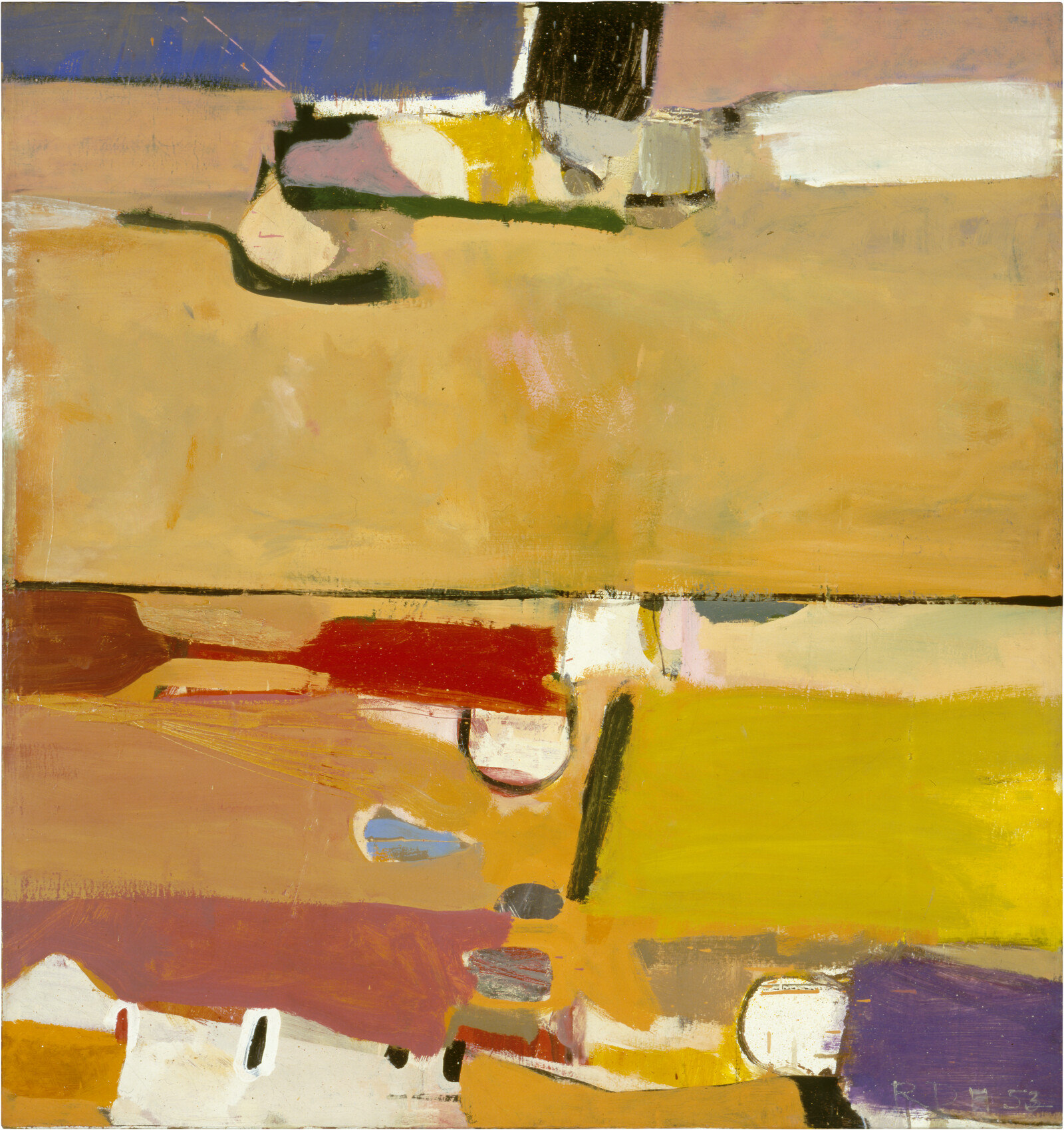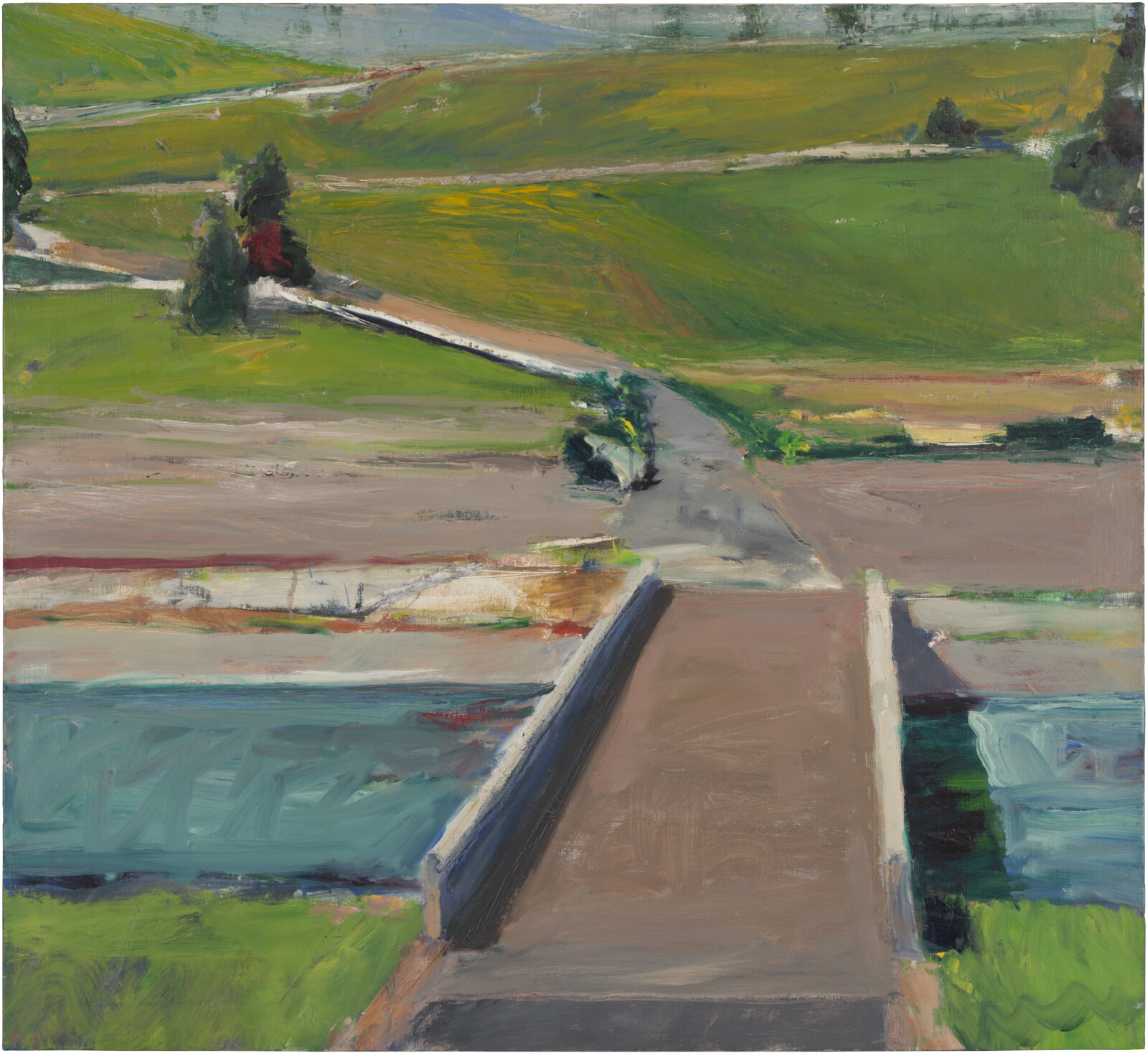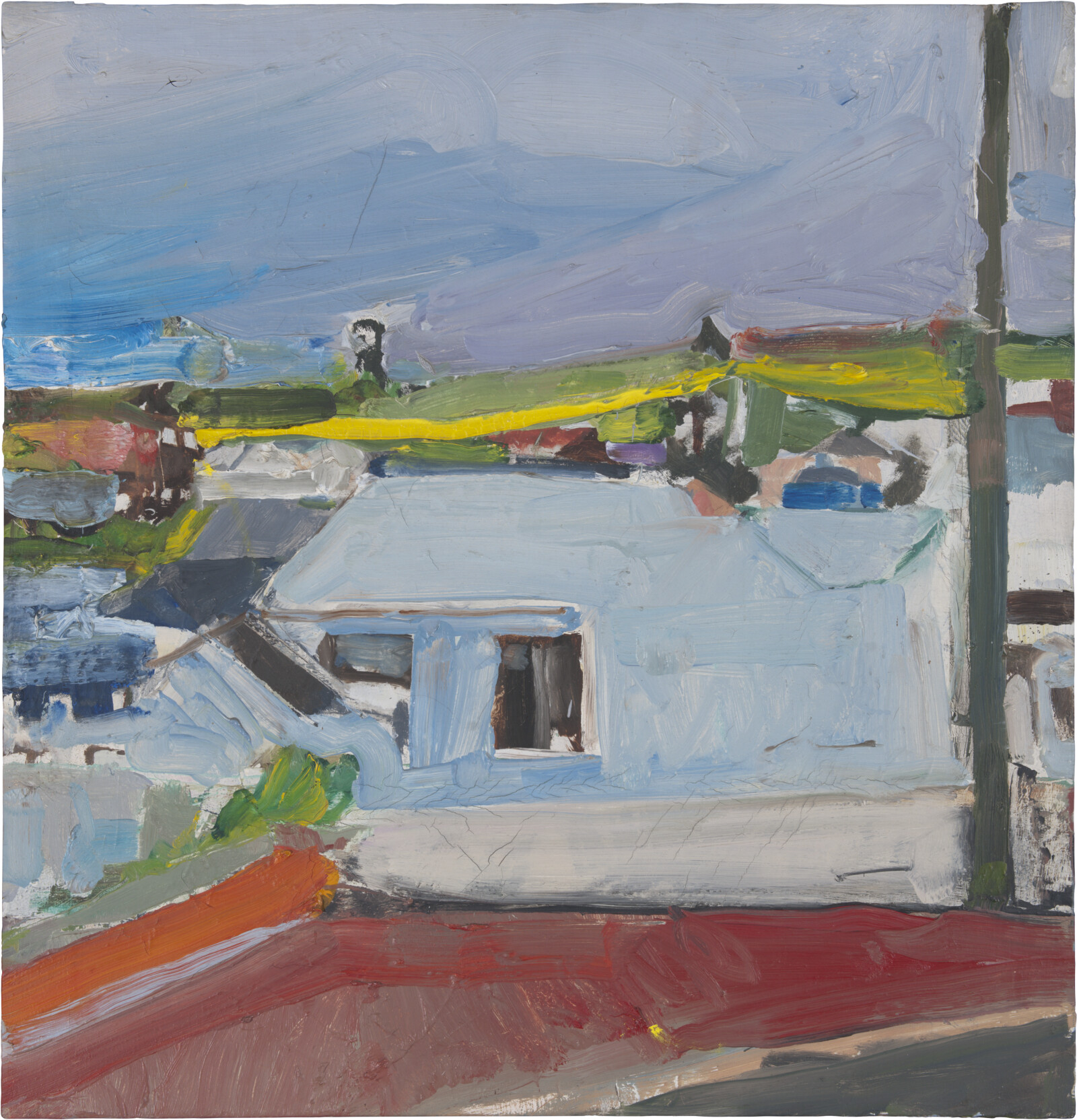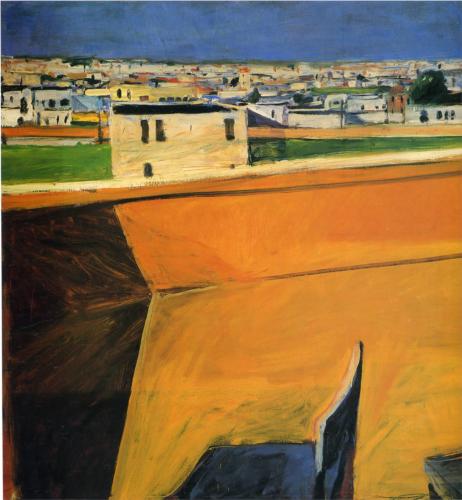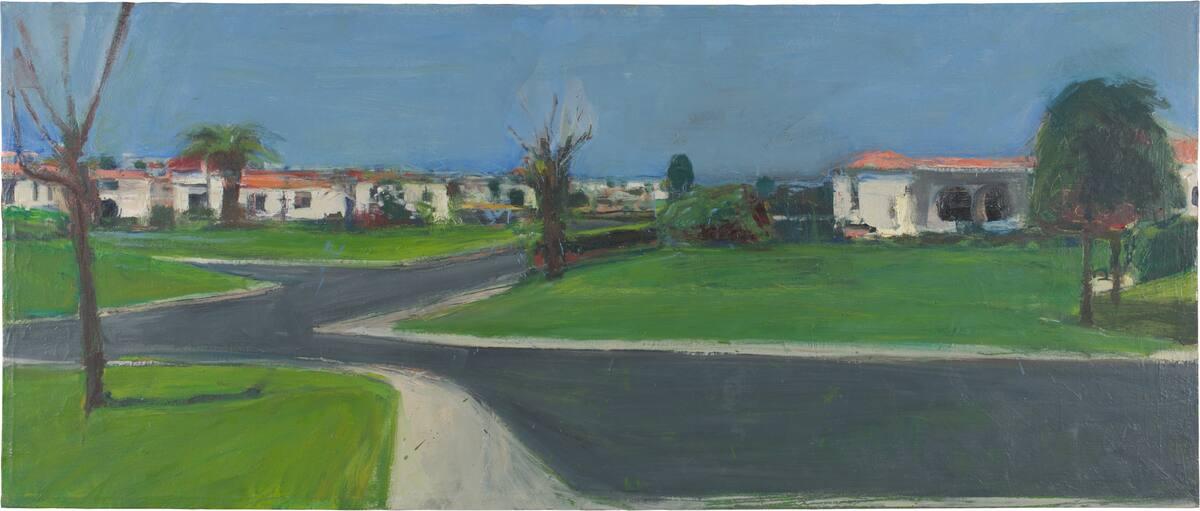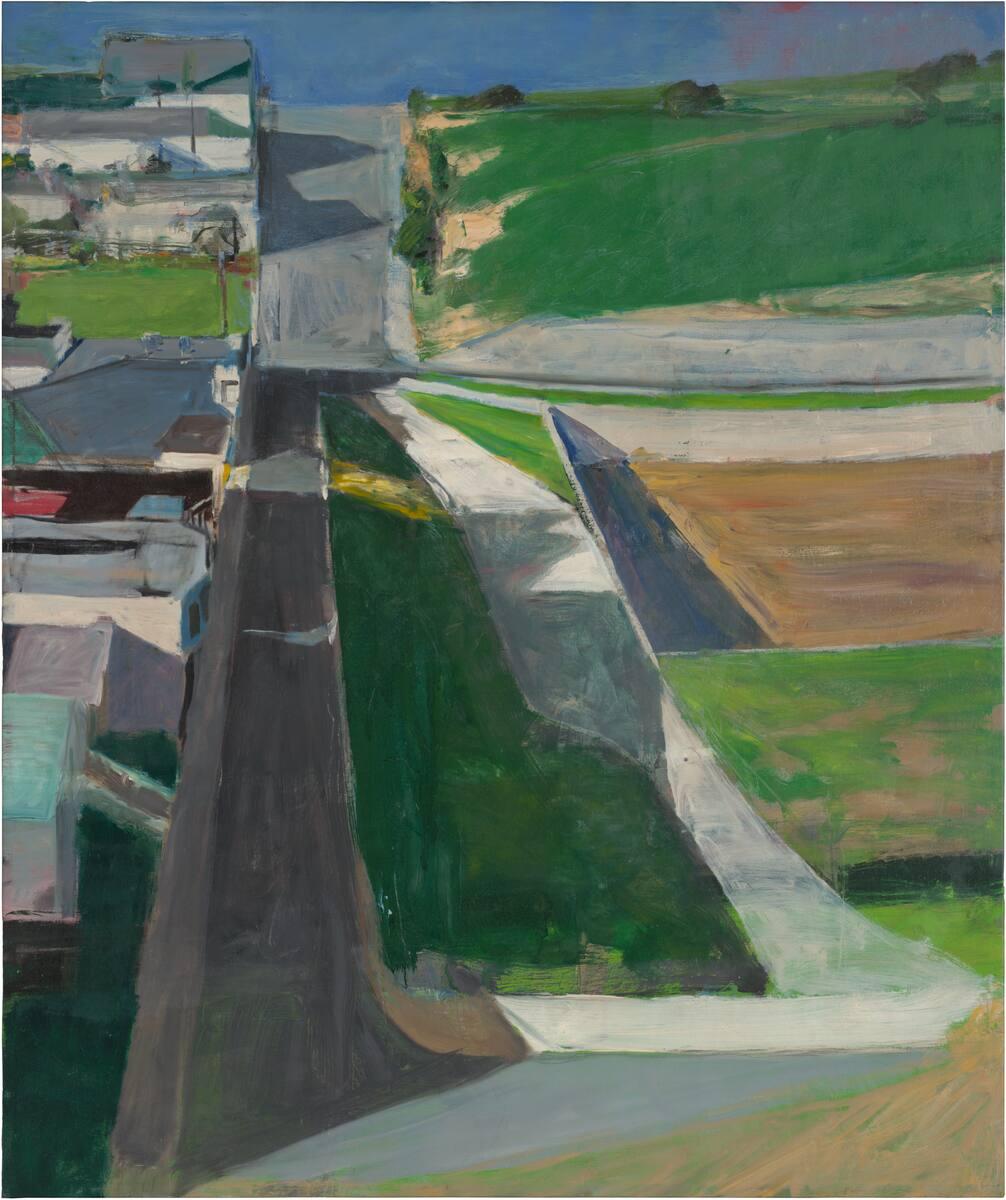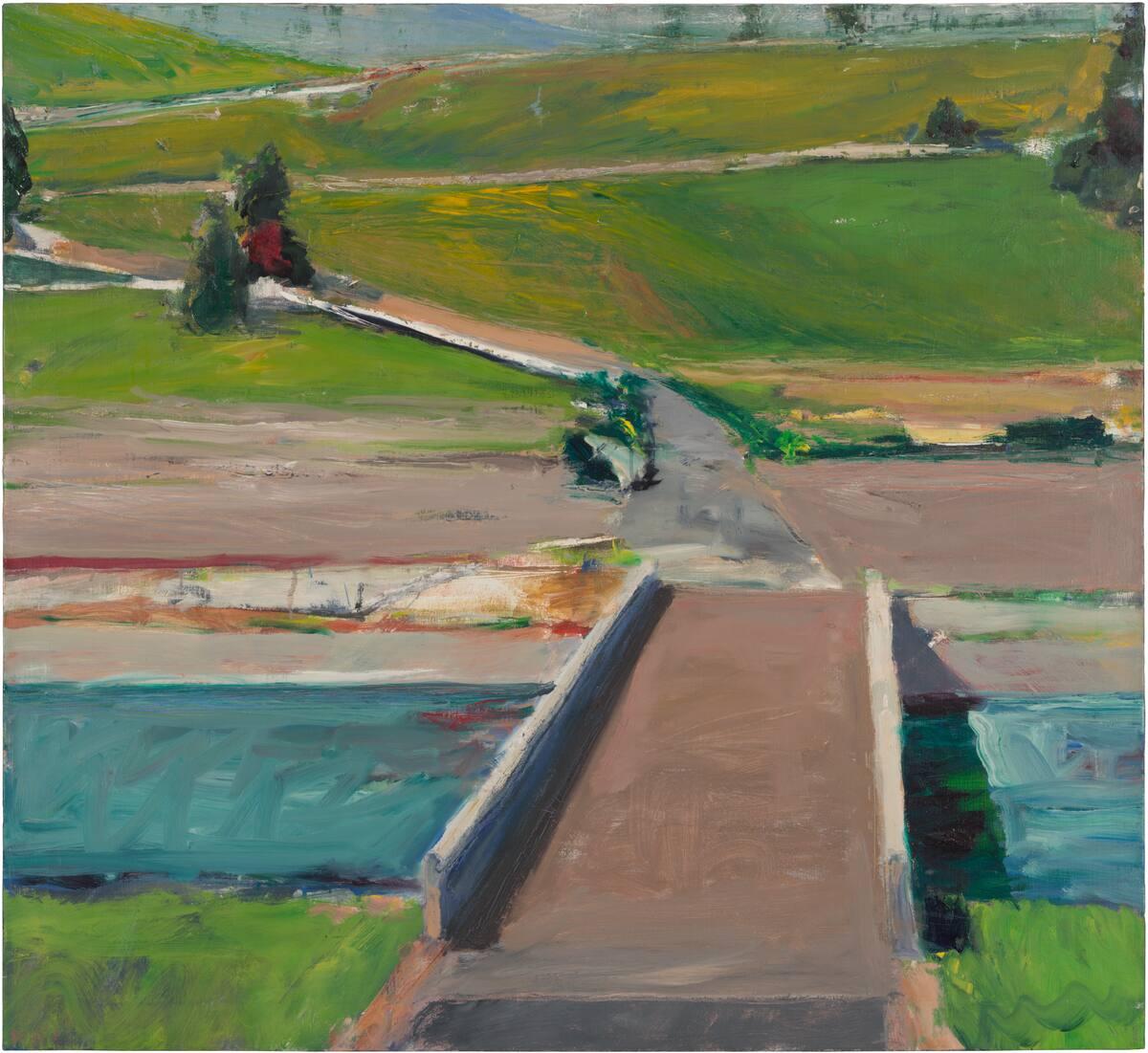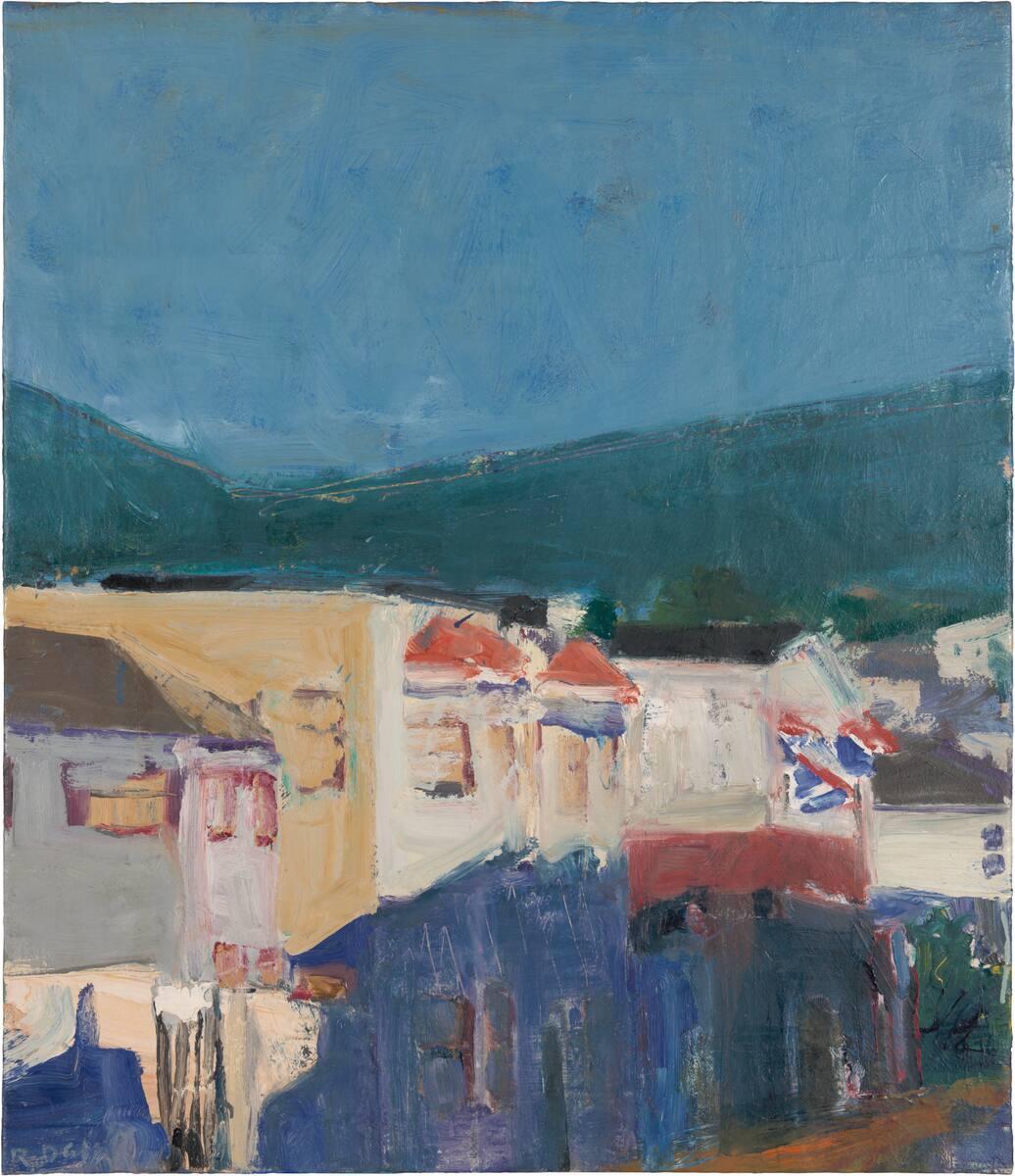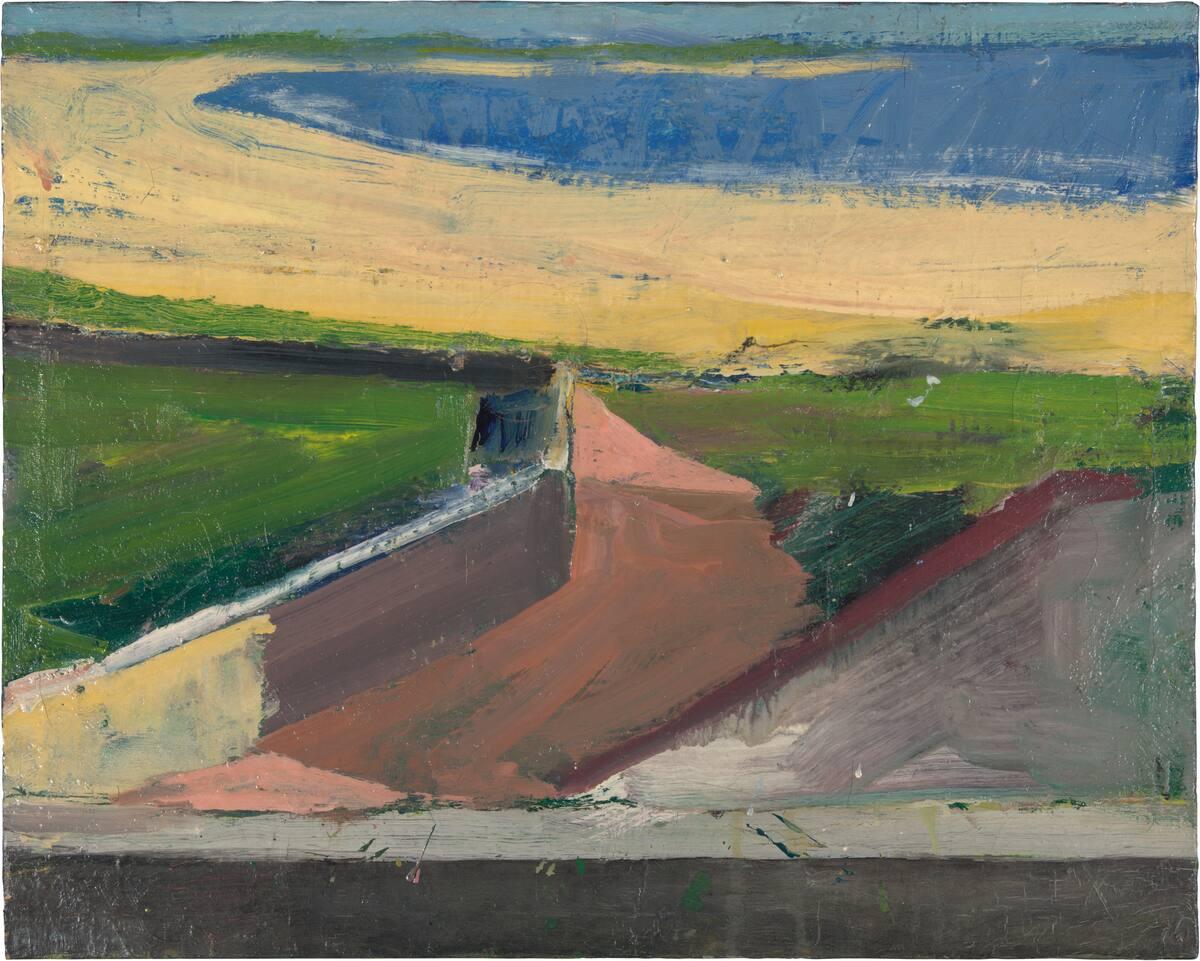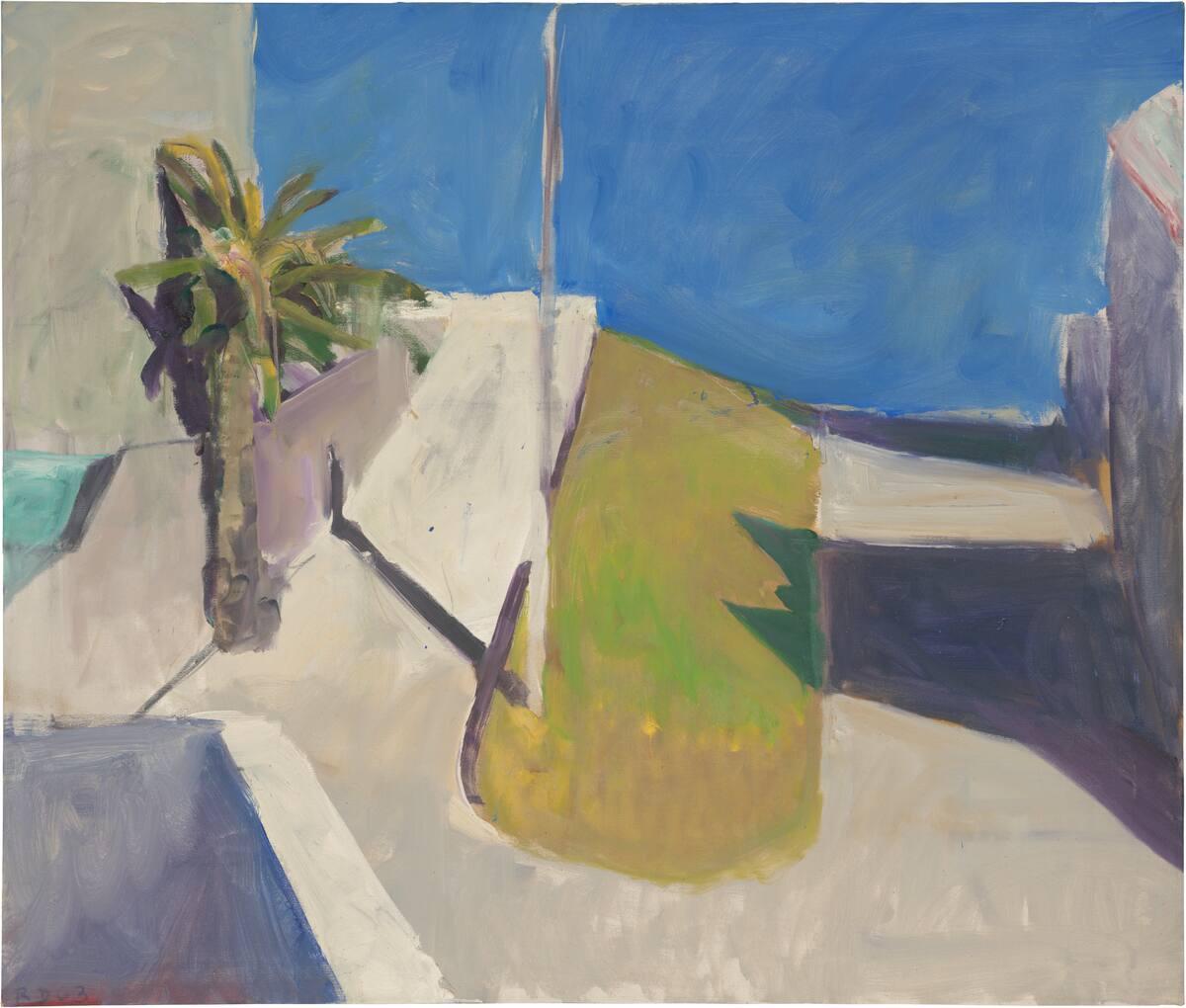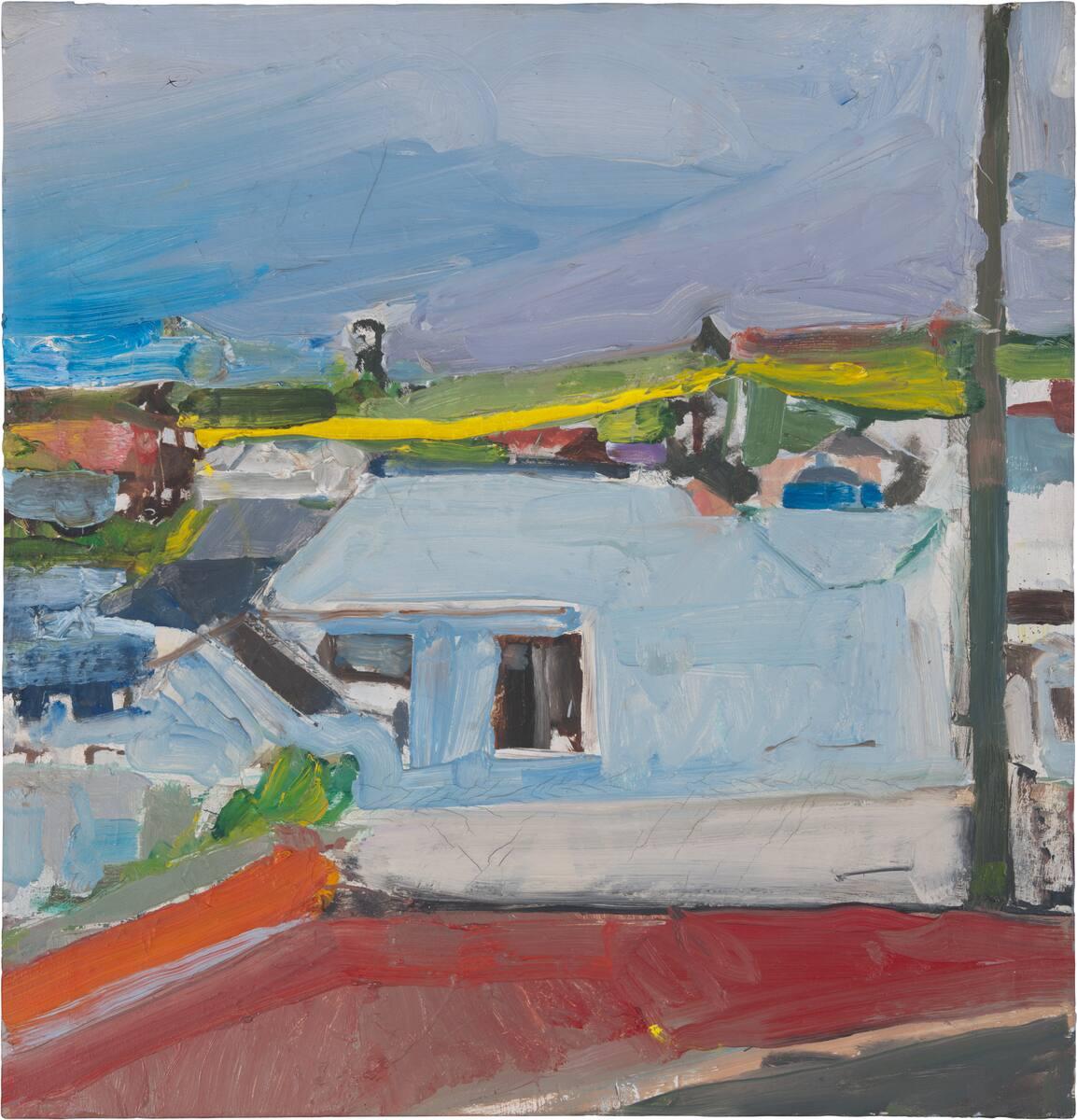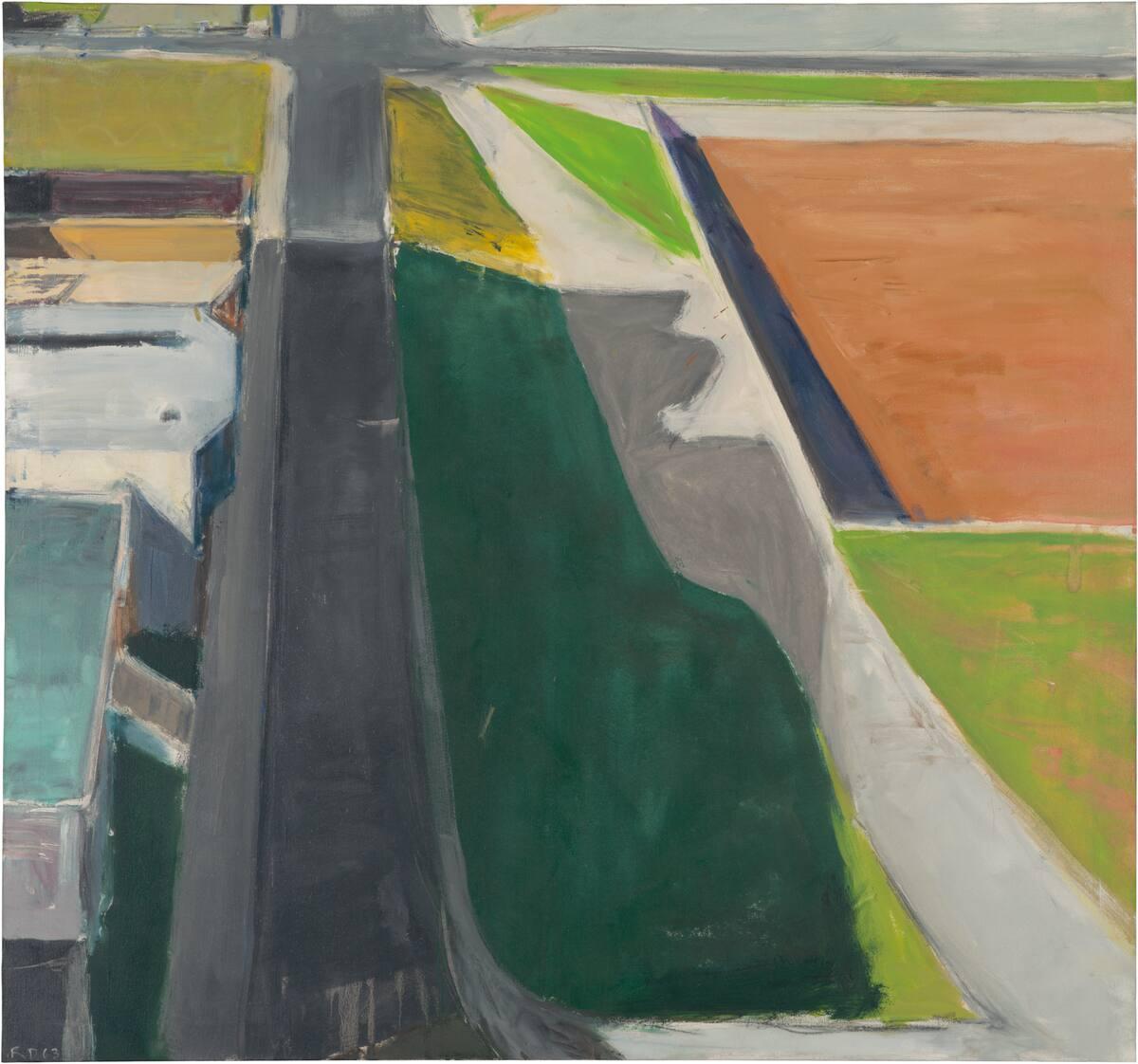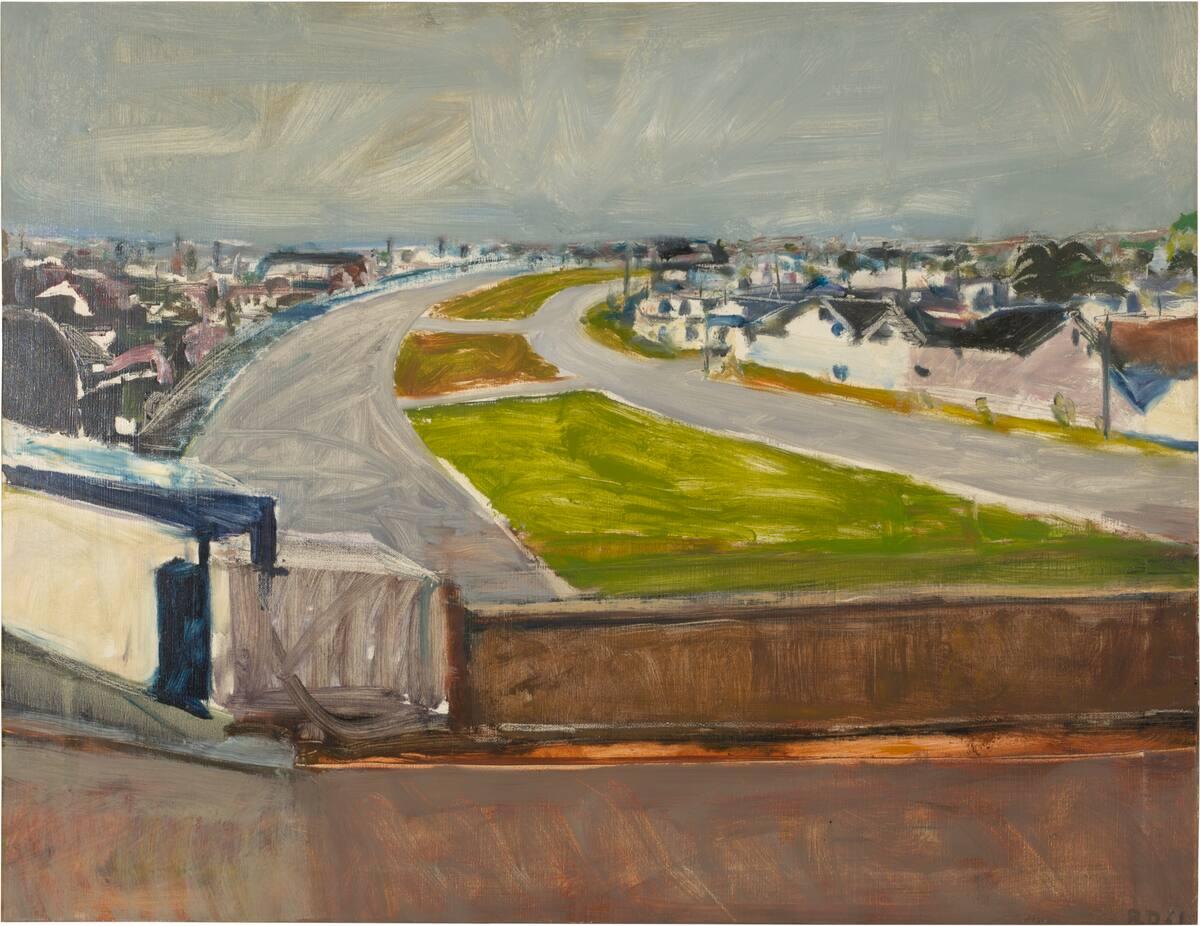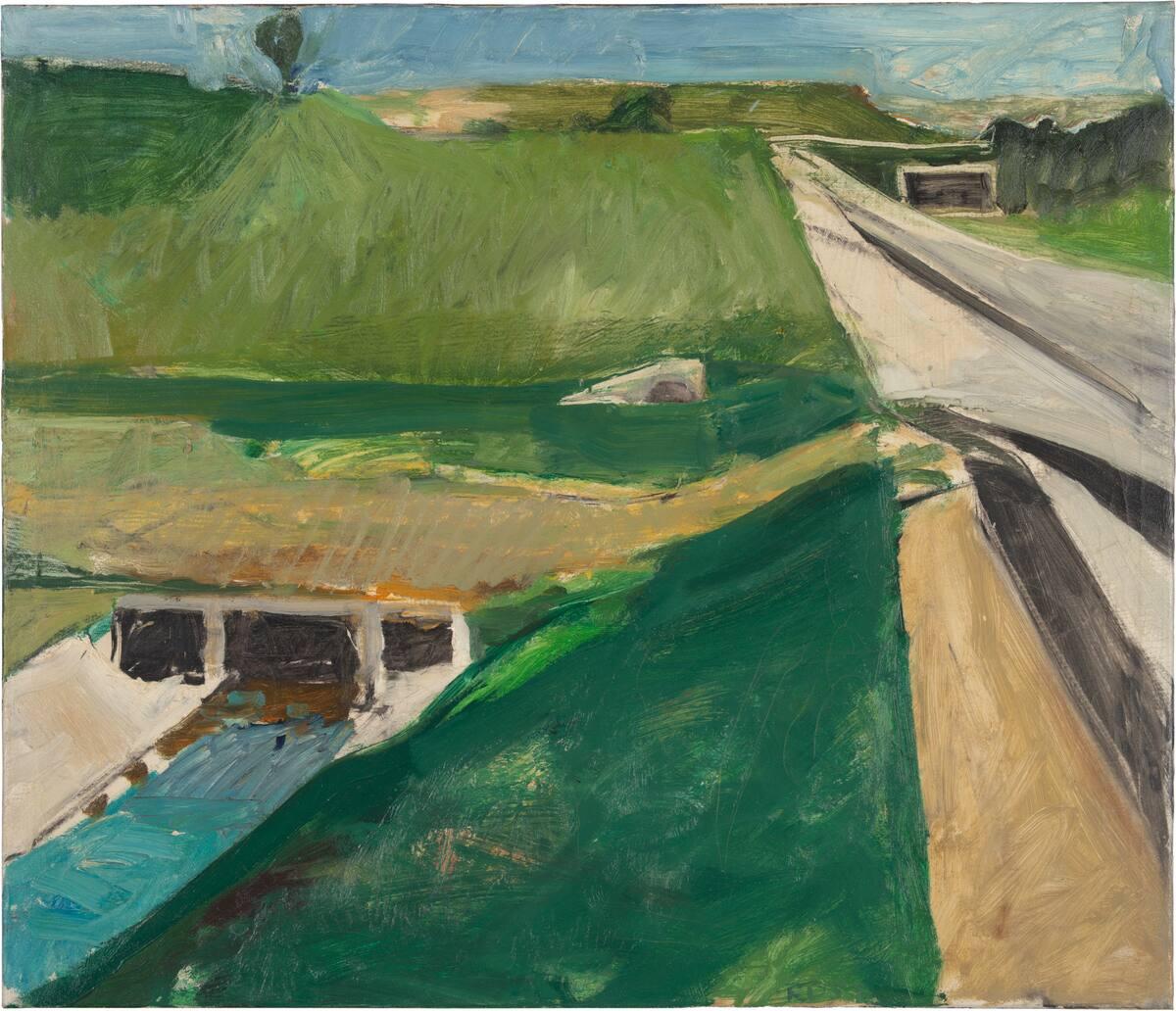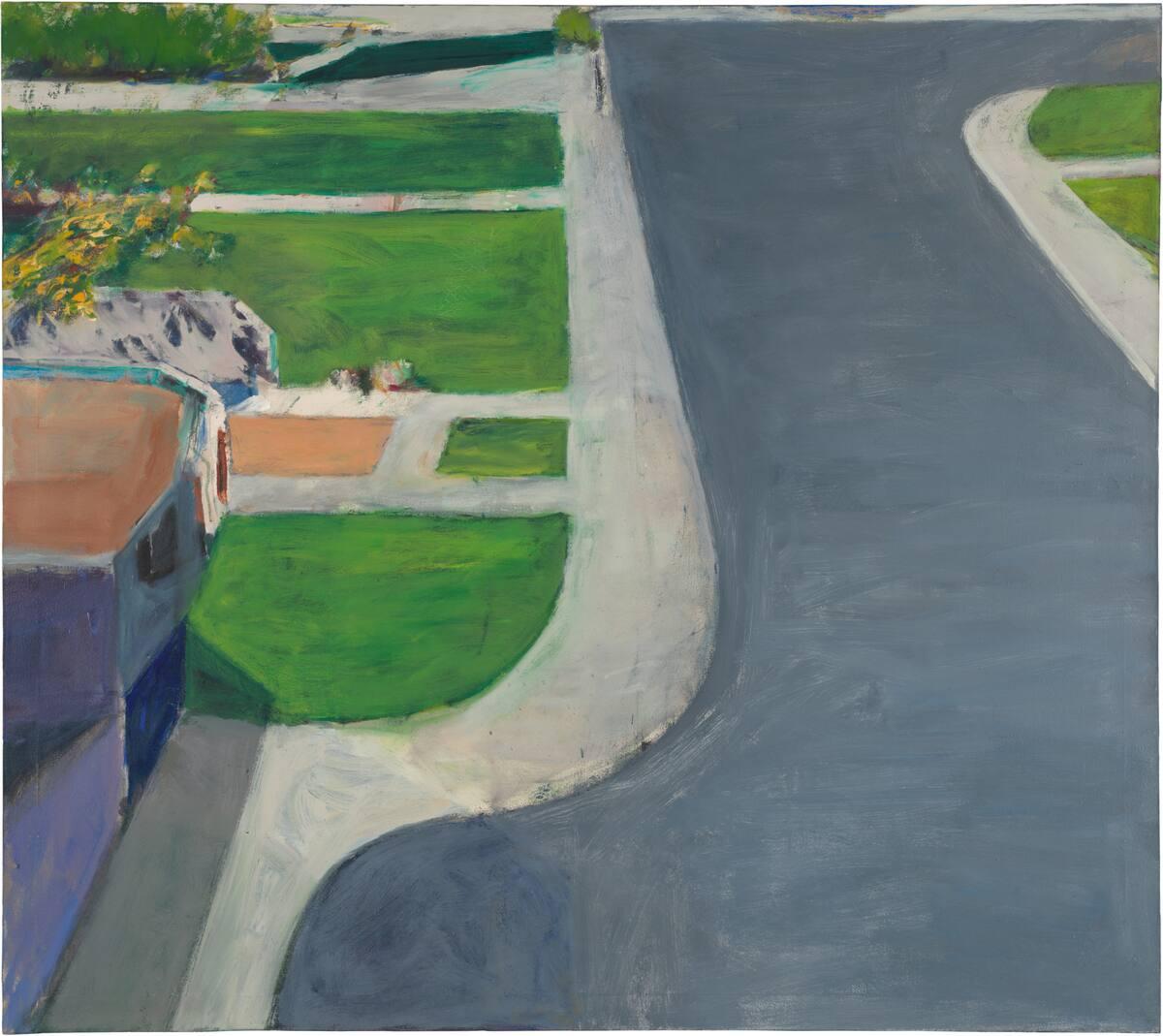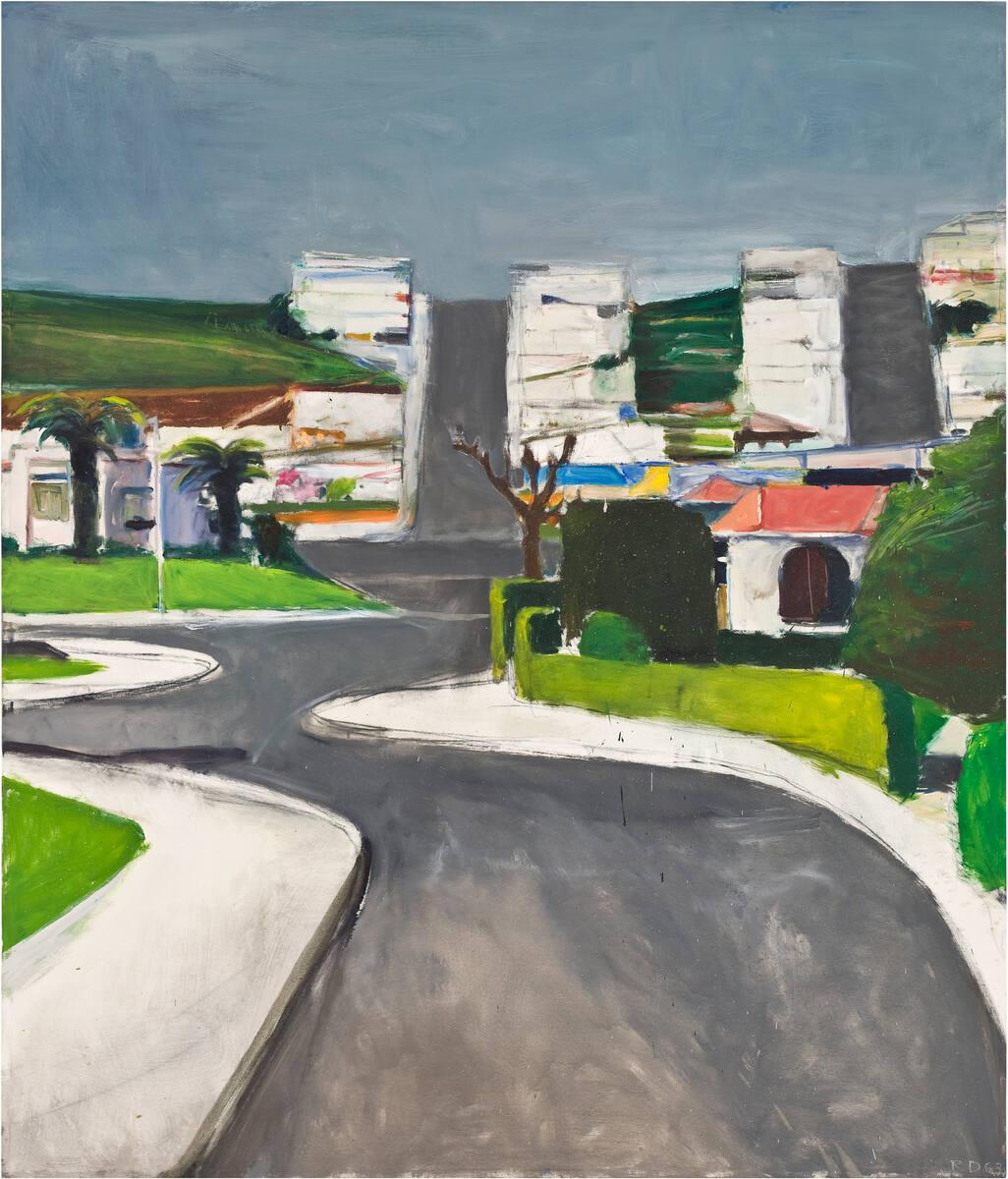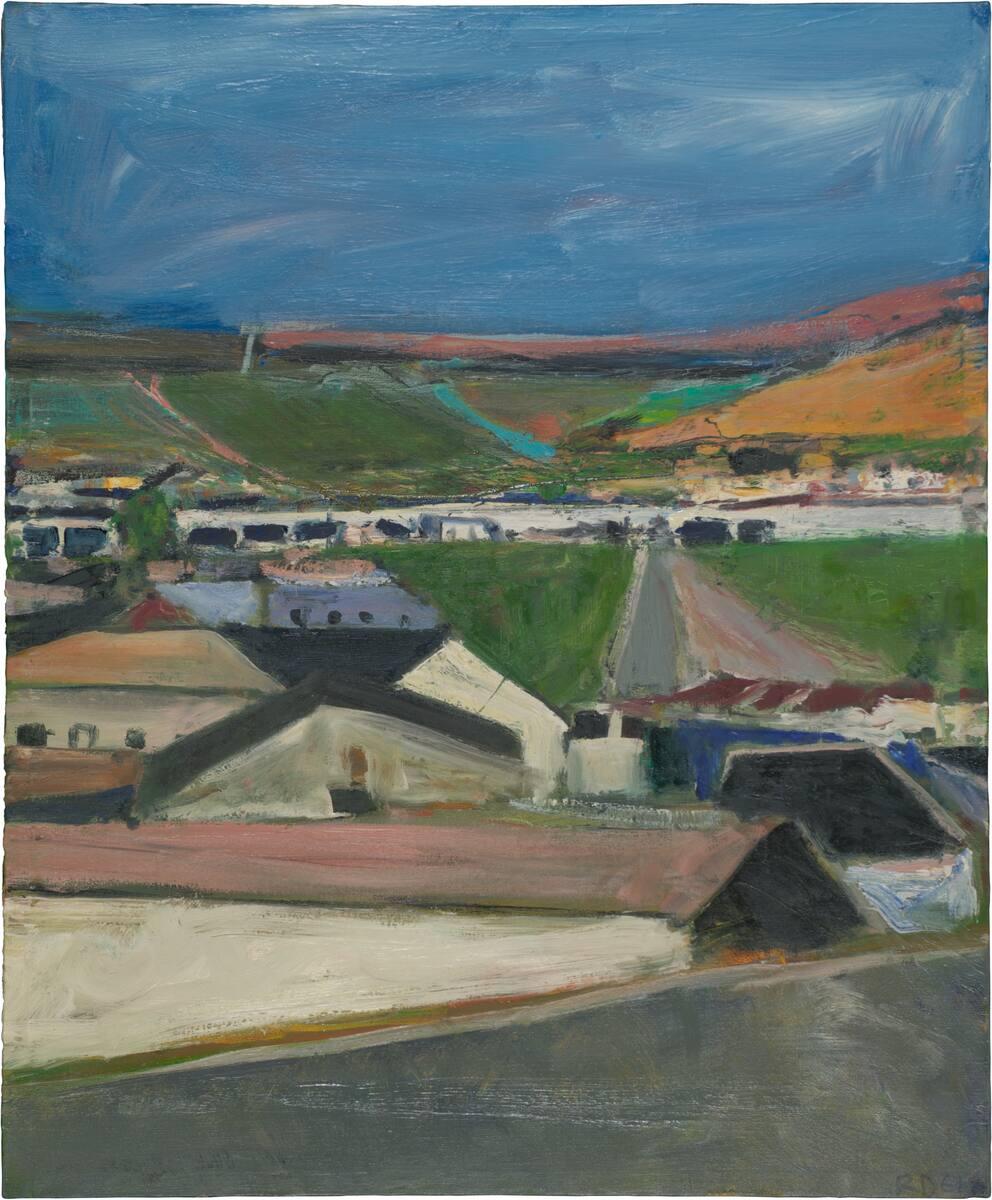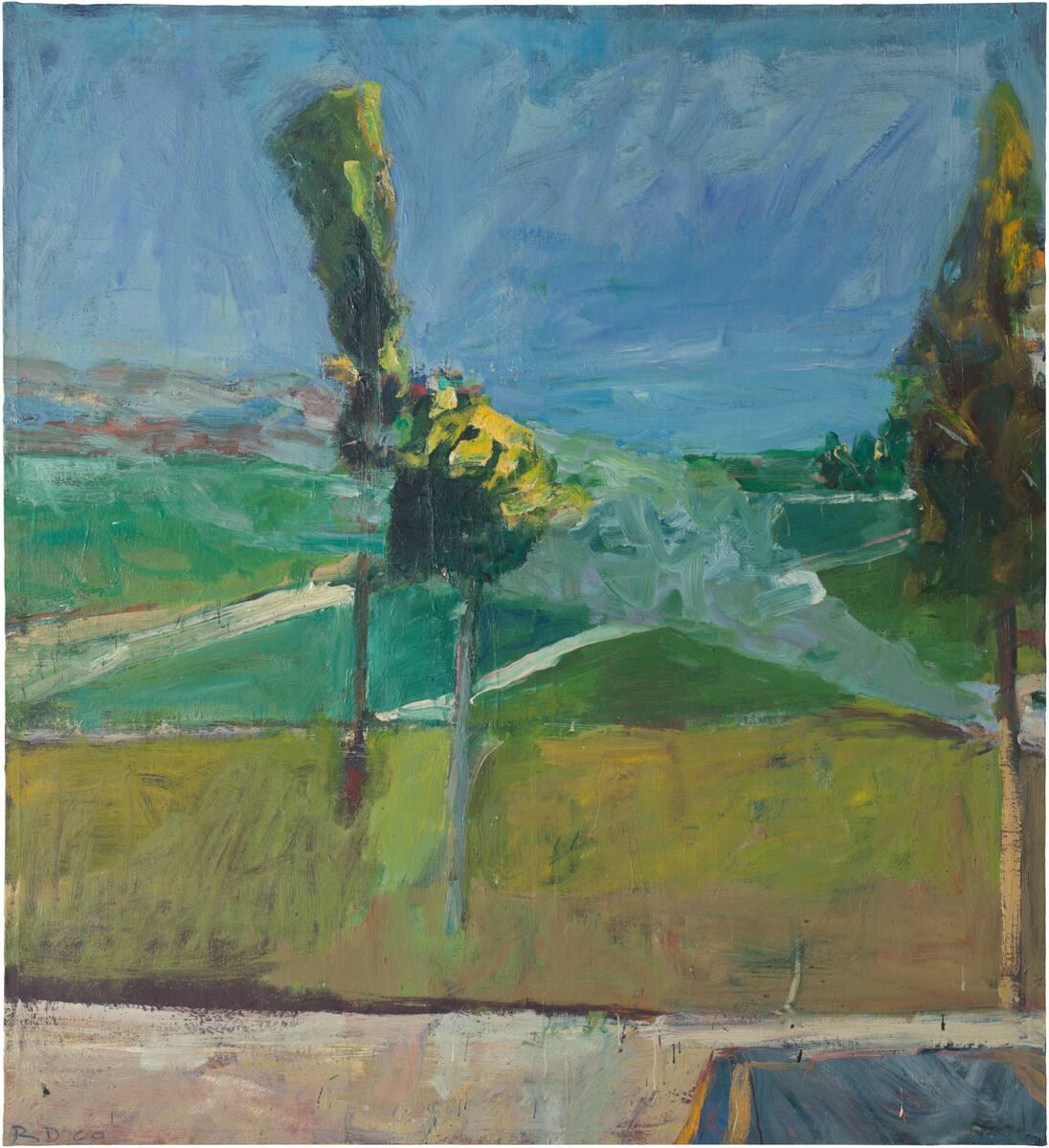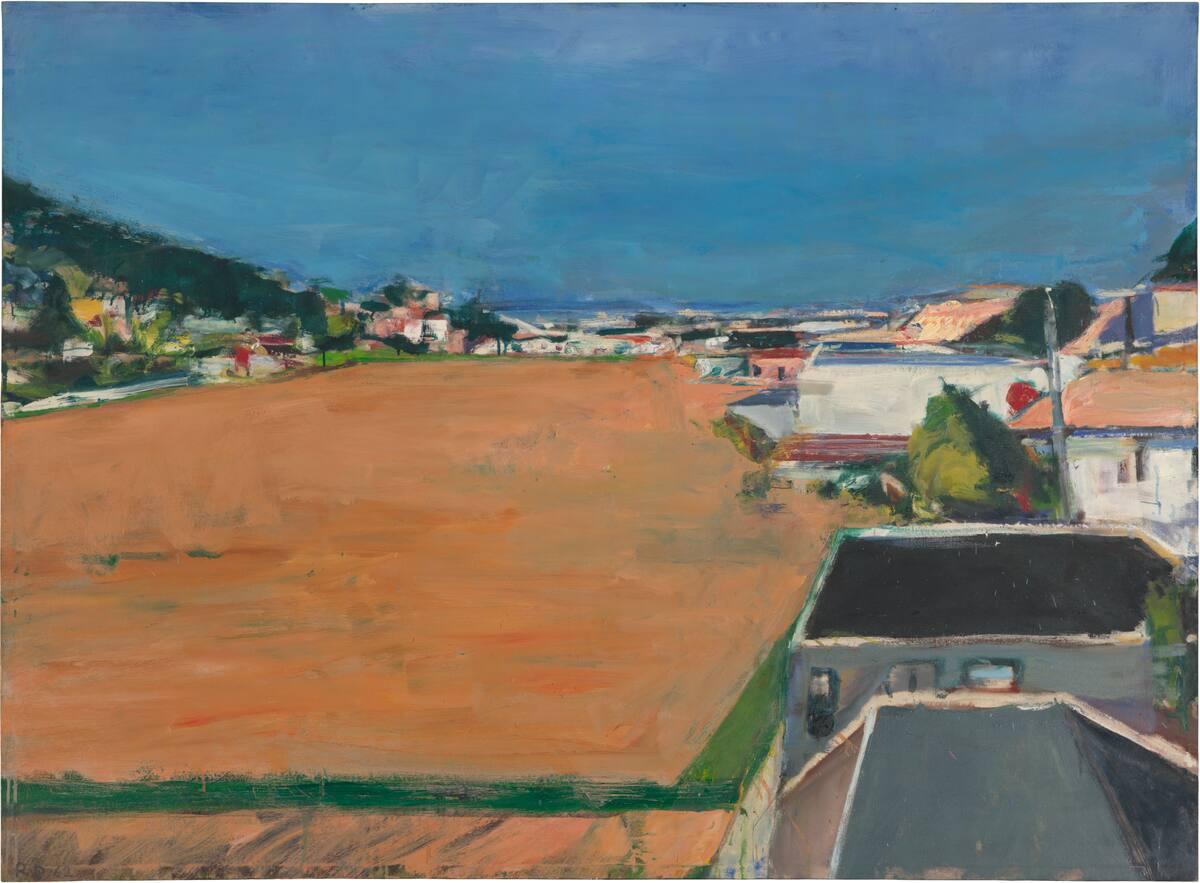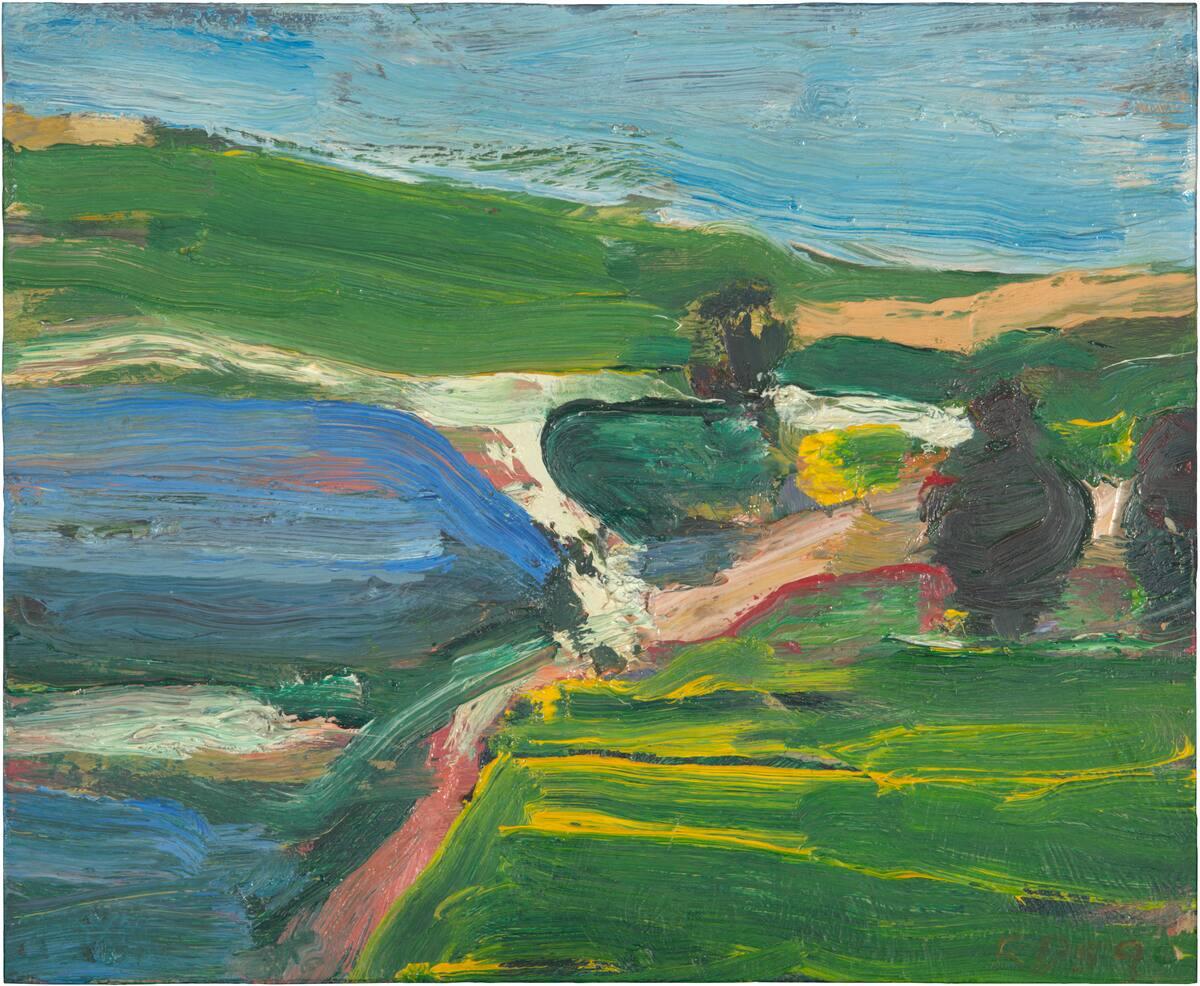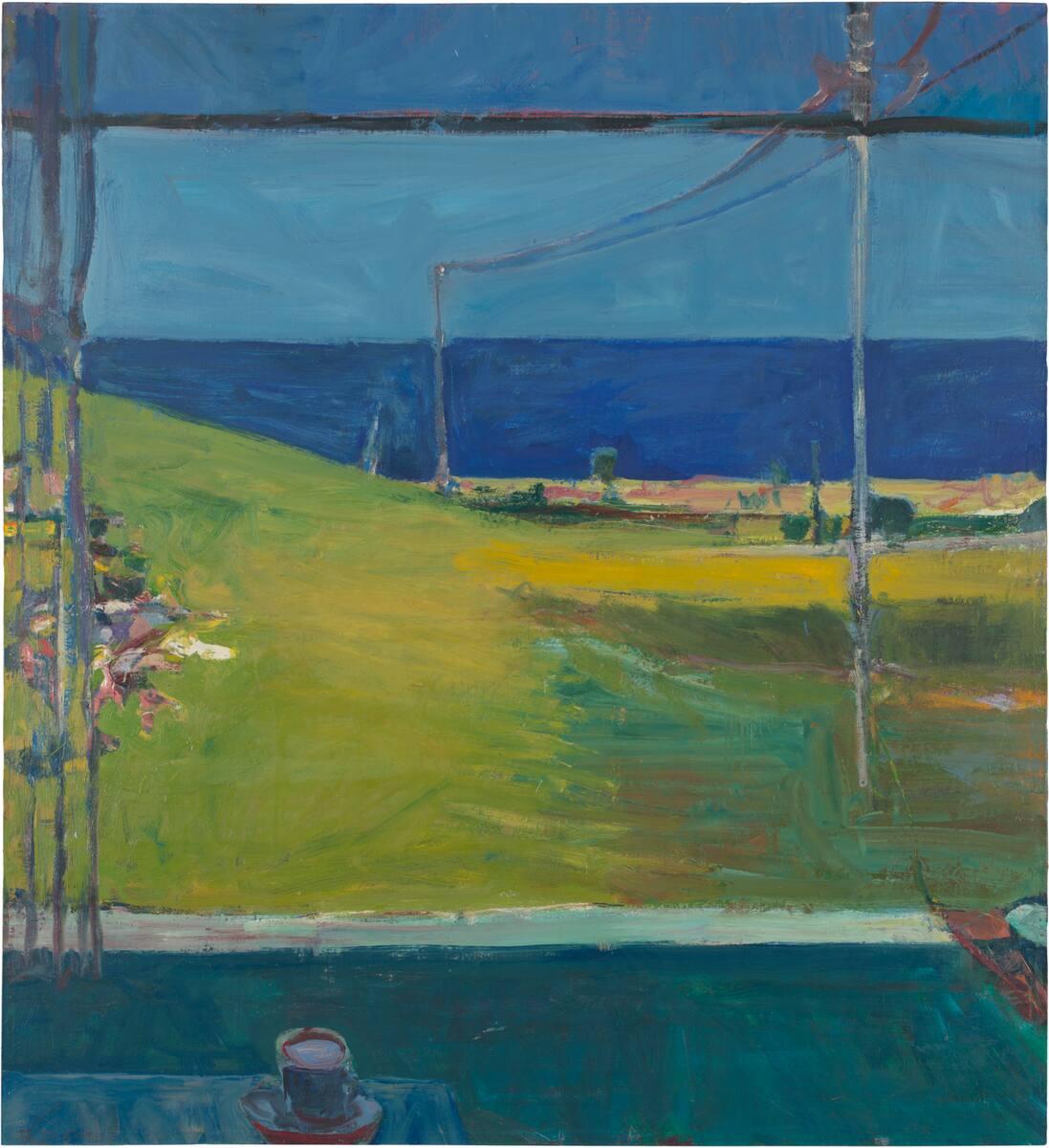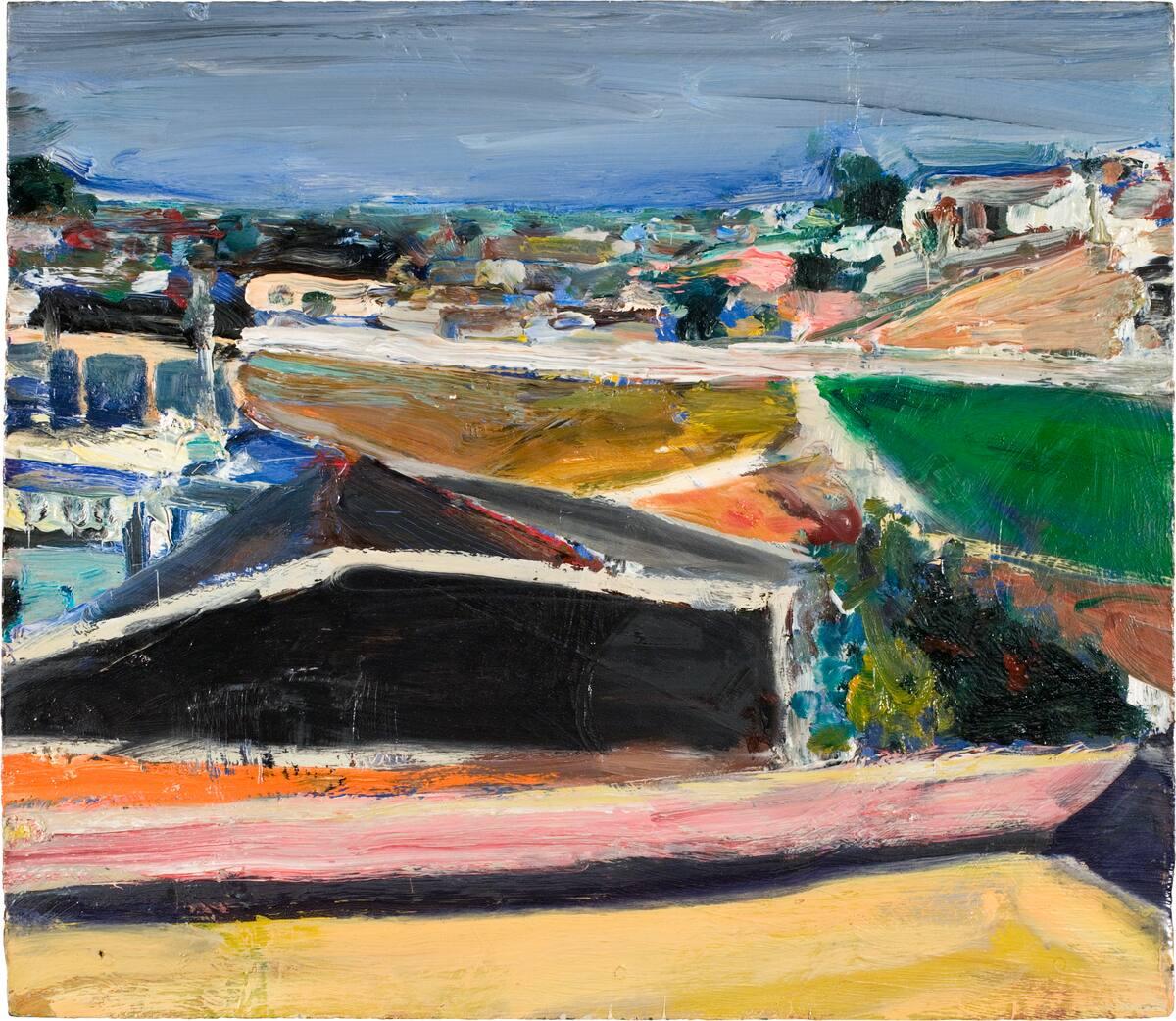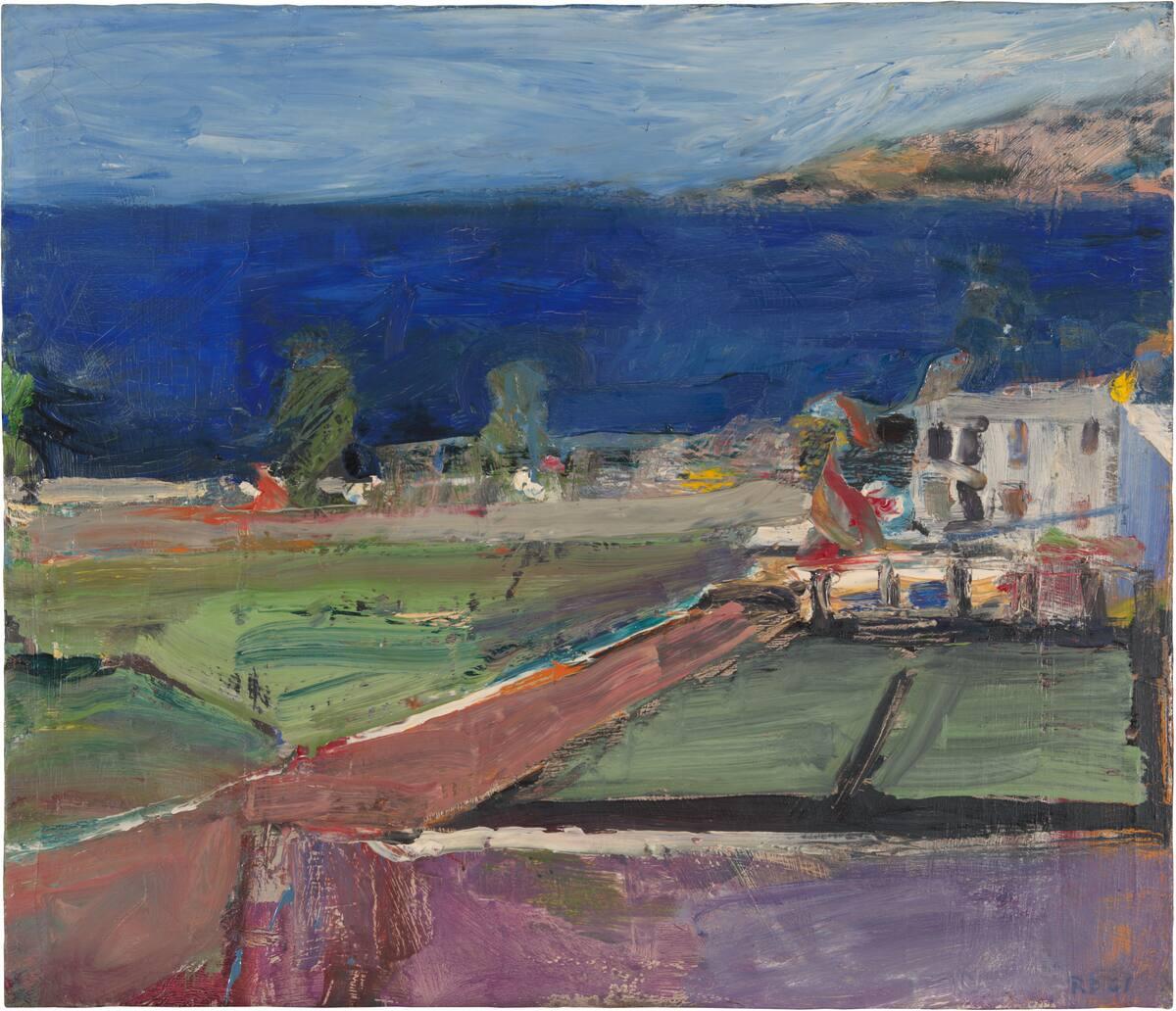Richard Diebenkorn (April 22, 1922 – March 30, 1993) was an American painter and printmaker. His early work is associated with abstract expressionism and the Bay Area Figurative Movement of the 1950s and 1960s. In the late 1960s he began his extensive series of geometric, lyrical abstract paintings. Known as the Ocean Park paintings, these paintings were instrumental to his achievement of worldwide acclaim. One art critic described Diebenkorn as “one of the premier American painters of the postwar era, whose deeply lyrical abstractions evoked the shimmering light and wide-open spaces of California, where he spent virtually his entire life.”
He was initially attracted by the works of Edward Hopper and Willem de Kooning. Diebenkorn’s first works were painted in realist style during the early 1940s, then in the gestural manner of Abstract Expressionism. By the mid-1950s, his focus had changed back towards painting directly from observation, similar to that of Henri Matisse‘s work. This lasted until the late 1960s, when he embarked on a new series of abstract geometric forms in his celebrated Ocean Park paintings. Diebenkorn died on March 30, 1993 in Berkeley, CA. Today, Diebenkorn’s works are held in the collections of The Museum of Modern Art in New York, the National Gallery of Art in Washington, D.C., and the Los Angeles County Museum of Art, among others.
I discovered Diebenkorn’s paintings when I lived in California. I was impressed with his use of many of the principles of painting as used by the Old Masters, but he applied them in a more contemporary way.
Why This Painting Works
In the above painting, Cityscape #1, we can see Richard Diebenkorn’s greatest strength is his skill in abstract design – the far music in a painting. Note how he divided the picture plane into a series of shapes, flattening the values and creating a simple notan structure. He always followed the principle of unequal space division in order to ensure variety in his work.
In this painting he uses a green, orange, violet secondary color harmony. The small red and cyan shapes add interest to the harmony. Note how the red of the shape in the middle left border is repeated in the sky in the top right hand corner, following the principle of repeating color spots. Also note the contrast of temperature. This painting has a dominant cool temperature. He contrasts the cool violet and greens shapes with a few warm orange and yellow shapes.
Another compositional technique Diebenkorn used in this painting is the counterpoint in the foreground road. He does this by having a diagonal at the very bottom of the painting, which goes from lower left to right, which leads to other diagonal shapes, which go in the opposite direction from bottom right to left. He also uses the perspective of the road to lead you into the painting, so that in addition to moving your eye around the two dimensional surface of the painting, your eye is also moving in and out of the third dimension.
Richard Diebenkorn’s Interior Paintings
Richard Diebenkorn’s Landscape Paintings
Richard Diebenkorn’s Life and Work
This is a short video created for USA Network TV channel CBS’s program “Sunday Morning,” which originally aired on December 27, 1988. Correspondent David Browning visited Richard Diebenkorn’s studio in California’s Sonoma County, to discuss the artist’s “trial and error” approach; and New York’s Museum of Modern Art, where Diebenkorn was being celebrated by a one-man show of his drawings.
In this video, Gretchen Diebenkorn Grant, daughter of Richard Diebenkorn, shares her insights and thoughts on the life and art of her father.
